Desludging
in ChampagneThe desludging of Champagne is an essential step in the production of this fine sparkling wine. It is a process that serves to remove the yeast particles and other cloudy substances that accumulate in the bottle during the second fermentation. This fermentation, which is also known as the "Méthode Champenoise", gives the Champagne its characteristic carbon dioxide and fine perlage. However, before the champagne is ready for sale, the unsightly residue must be removed. This is where the degorgement process plays a decisive role.
Champagne dégorgement was developed at the end of the 18th century. The process was refined in 1775 by the Champagne producer Jean-Baptiste André Guérin. The method was then adopted and further developed by other champagne producers.
The Méthode Champenoise and its significance
Before we delve deeper into the de-stemming process, it is important to understand the "Méthode Champenoise". This traditional method of making Champagne begins with the first fermentation, during which the base wine is produced. After this first fermentation, a mixture of sugar and yeast, known as "liqueur de tirage", is added to the wine before it is bottled and sealed with a crown cap. This second fermentation takes place in the bottle and produces carbon dioxide and a yeast sediment known as "lees" or "sediment".
The shaking (Remuage)
Before the blow-down can be carried out, the yeast sediment must be moved into the neck of the bottle. This process is known as "riddling" or "remuage". The bottles are placed in special shaking desks, known as "pupitres", and turned and tilted daily by hand or by machine. The aim is to gradually move the yeast into the neck of the bottle. This can take several weeks, depending on the type of champagne and the desired results.
Traditionally, riddling was carried out by experienced "riddling masters" who slowly turned and tilted the bottles over a period of six to eight weeks. Nowadays, this process is often carried out by machines in order to reduce time and labour.
Desludging (Dégorgement)
After the yeast has accumulated in the neck of the bottle, the actual degassing follows. This is the step in which the yeast particles are removed. There are two main methods of degorgement: "dégorgement à la volée" and "dégorgement à la glace".
Dégorgement à la volée
In this traditional method, the crown cap of the bottle is removed manually and the pressure of the carbon dioxide ejects the yeast particles from the bottle. This method requires a great deal of skill and experience, as it must be carried out quickly and precisely to ensure minimal loss of champagne.
Dégorgement à la glace
This more modern method is more precise and efficient. The neck of the bottle is immersed in an ice-cold glycol bath, which freezes the yeast. As soon as the yeast sediment is frozen, the crown cap is removed and the frozen yeast plug is ejected from the bottle by the pressure of the carbon dioxide. This method is less labour-intensive and results in less loss of champagne.
Dosage and corking
After the degorgement, the resulting loss of liquid is compensated for by a mixture of wine and sugar, the so-called "dosage" or "liqueur d'expédition". The amount of sugar in the dosage determines the final sweetness level of the champagne, from brut nature (no added sugar) to doux (very sweet).
The bottle is then sealed with a natural cork and secured with an agraffe (wire basket). The champagne is now ready for storage and sale.
The importance of the deglazing process for the quality of the champagne
Racking is not just a technical step, but a crucial process that significantly influences the quality and purity of the champagne. A carefully carried out degorgement ensures that no yeast particles remain in the champagne, resulting in a clear, sparkling wine. Sparkling wine leads to a better flavour. In addition, draining affects the mouthfeel and flavour of the champagne, as unwanted bitter or cloudy notes are removed.
Tradition and modernity
Although the methods of de-stemming have evolved and improved over the years, the process remains an essential part of traditional Champagne production. Many Champagne houses combine traditional techniques with modern technology to ensure the highest quality of their products. While the use of machinery has increased efficiency, the craftsmanship and experience of the winemakers remain essential to preserve the characteristic style and uniqueness of each Champagne.
Conclusion
Destemming is a complex and meticulous process that is deeply rooted in the tradition of Champagne production. It requires both craftsmanship and technological precision to ensure that the champagne is clear, pure and of the highest quality. By combining tradition and innovation, the Champagne houses succeed in preserving and perfecting the magic of this noble sparkling wine.
Back to the lexicon & glossary | You were here: Desludging
 https://champagner.com/wp-content/uploads/2021/01/Jouy-les-Reims-PLZ-51390.jpeg
375
500
admin
https://champagner.com/wp-content/uploads/2024/07/Champagner.com-Logo-300x300.png
admin2021-01-22 09:12:262024-08-03 21:16:21Jouy-lès-Rheims
https://champagner.com/wp-content/uploads/2021/01/Jouy-les-Reims-PLZ-51390.jpeg
375
500
admin
https://champagner.com/wp-content/uploads/2024/07/Champagner.com-Logo-300x300.png
admin2021-01-22 09:12:262024-08-03 21:16:21Jouy-lès-Rheims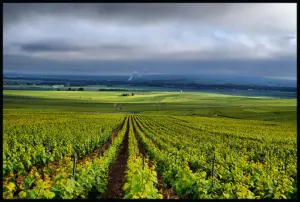 champagne.com
https://champagner.com/wp-content/uploads/2018/04/BINET_Montagne_de_Reims.jpg
336
500
admin
https://champagner.com/wp-content/uploads/2024/07/Champagner.com-Logo-300x300.png
admin2021-01-10 18:42:182024-08-03 21:17:37Reims
champagne.com
https://champagner.com/wp-content/uploads/2018/04/BINET_Montagne_de_Reims.jpg
336
500
admin
https://champagner.com/wp-content/uploads/2024/07/Champagner.com-Logo-300x300.png
admin2021-01-10 18:42:182024-08-03 21:17:37Reims https://champagner.com/wp-content/uploads/2021/01/Epernay-PLZ-51200.webp
906
1360
admin
https://champagner.com/wp-content/uploads/2024/07/Champagner.com-Logo-300x300.png
admin2021-01-10 18:30:232024-08-03 21:18:27Épernay
https://champagner.com/wp-content/uploads/2021/01/Epernay-PLZ-51200.webp
906
1360
admin
https://champagner.com/wp-content/uploads/2024/07/Champagner.com-Logo-300x300.png
admin2021-01-10 18:30:232024-08-03 21:18:27Épernay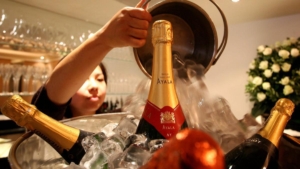 https://champagner.com/wp-content/uploads/2021/01/INAO.jpg
675
1200
admin
https://champagner.com/wp-content/uploads/2024/07/Champagner.com-Logo-300x300.png
admin2021-01-10 16:56:042024-08-03 21:19:50INAO
https://champagner.com/wp-content/uploads/2021/01/INAO.jpg
675
1200
admin
https://champagner.com/wp-content/uploads/2024/07/Champagner.com-Logo-300x300.png
admin2021-01-10 16:56:042024-08-03 21:19:50INAO champagne.com
https://champagner.com/wp-content/uploads/2018/04/alfred-gratien.jpg
1280
1920
admin
https://champagner.com/wp-content/uploads/2024/07/Champagner.com-Logo-300x300.png
admin2021-01-10 16:52:002024-08-03 21:22:10Historical grape varieties
champagne.com
https://champagner.com/wp-content/uploads/2018/04/alfred-gratien.jpg
1280
1920
admin
https://champagner.com/wp-content/uploads/2024/07/Champagner.com-Logo-300x300.png
admin2021-01-10 16:52:002024-08-03 21:22:10Historical grape varieties https://champagner.com/wp-content/uploads/2021/01/hautvillers-champagne.jpg
960
1440
admin
https://champagner.com/wp-content/uploads/2024/07/Champagner.com-Logo-300x300.png
admin2021-01-10 16:48:202024-08-03 21:23:20Hautvillers
https://champagner.com/wp-content/uploads/2021/01/hautvillers-champagne.jpg
960
1440
admin
https://champagner.com/wp-content/uploads/2024/07/Champagner.com-Logo-300x300.png
admin2021-01-10 16:48:202024-08-03 21:23:20Hautvillers https://champagner.com/wp-content/uploads/2021/01/Haltbarkeit-und-Lagerung.jpeg
440
783
admin
https://champagner.com/wp-content/uploads/2024/07/Champagner.com-Logo-300x300.png
admin2021-01-10 16:46:572024-08-03 21:24:14Shelf life and storage
https://champagner.com/wp-content/uploads/2021/01/Haltbarkeit-und-Lagerung.jpeg
440
783
admin
https://champagner.com/wp-content/uploads/2024/07/Champagner.com-Logo-300x300.png
admin2021-01-10 16:46:572024-08-03 21:24:14Shelf life and storage https://champagner.com/wp-content/uploads/2021/01/Grauves-PLZ-51190.jpg
768
1600
admin
https://champagner.com/wp-content/uploads/2024/07/Champagner.com-Logo-300x300.png
admin2021-01-10 13:40:432024-08-03 21:24:57Grey vines
https://champagner.com/wp-content/uploads/2021/01/Grauves-PLZ-51190.jpg
768
1600
admin
https://champagner.com/wp-content/uploads/2024/07/Champagner.com-Logo-300x300.png
admin2021-01-10 13:40:432024-08-03 21:24:57Grey vines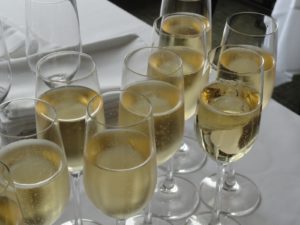 champagne.com
https://champagner.com/wp-content/uploads/2018/04/Champagner-H-Blin.jpg
1200
1600
admin
https://champagner.com/wp-content/uploads/2024/07/Champagner.com-Logo-300x300.png
admin2021-01-10 13:38:272024-08-03 21:28:31Champagne glasses
champagne.com
https://champagner.com/wp-content/uploads/2018/04/Champagner-H-Blin.jpg
1200
1600
admin
https://champagner.com/wp-content/uploads/2024/07/Champagner.com-Logo-300x300.png
admin2021-01-10 13:38:272024-08-03 21:28:31Champagne glasses https://champagner.com/wp-content/uploads/2021/01/Flaschengaerung.jpg
800
1200
admin
https://champagner.com/wp-content/uploads/2024/07/Champagner.com-Logo-300x300.png
admin2021-01-10 00:03:282024-08-03 21:33:23Bottle fermentation
https://champagner.com/wp-content/uploads/2021/01/Flaschengaerung.jpg
800
1200
admin
https://champagner.com/wp-content/uploads/2024/07/Champagner.com-Logo-300x300.png
admin2021-01-10 00:03:282024-08-03 21:33:23Bottle fermentation https://champagner.com/wp-content/uploads/2021/01/Flaschendruck.jpg
1125
2000
admin
https://champagner.com/wp-content/uploads/2024/07/Champagner.com-Logo-300x300.png
admin2021-01-09 23:40:192024-08-03 21:34:25Bottle pressure
https://champagner.com/wp-content/uploads/2021/01/Flaschendruck.jpg
1125
2000
admin
https://champagner.com/wp-content/uploads/2024/07/Champagner.com-Logo-300x300.png
admin2021-01-09 23:40:192024-08-03 21:34:25Bottle pressure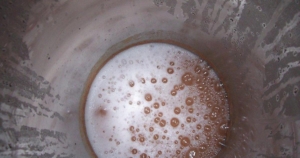 https://champagner.com/wp-content/uploads/2021/01/Fermentation.jpg
630
1200
admin
https://champagner.com/wp-content/uploads/2024/07/Champagner.com-Logo-300x300.png
admin2021-01-09 23:39:482024-08-03 21:36:08Fermentation
https://champagner.com/wp-content/uploads/2021/01/Fermentation.jpg
630
1200
admin
https://champagner.com/wp-content/uploads/2024/07/Champagner.com-Logo-300x300.png
admin2021-01-09 23:39:482024-08-03 21:36:08Fermentation champagne.com
https://champagner.com/wp-content/uploads/2018/04/billecart-salmon-champagner-extra-brut.png
600
600
admin
https://champagner.com/wp-content/uploads/2024/07/Champagner.com-Logo-300x300.png
admin2021-01-09 23:37:402024-08-03 21:37:45Extra Brut
champagne.com
https://champagner.com/wp-content/uploads/2018/04/billecart-salmon-champagner-extra-brut.png
600
600
admin
https://champagner.com/wp-content/uploads/2024/07/Champagner.com-Logo-300x300.png
admin2021-01-09 23:37:402024-08-03 21:37:45Extra Brut https://champagner.com/wp-content/uploads/2021/01/Etrechy-PLZ-51130.jpg
1024
1024
admin
https://champagner.com/wp-content/uploads/2024/07/Champagner.com-Logo-300x300.png
admin2021-01-09 23:35:582024-08-03 21:38:54Étréchy
https://champagner.com/wp-content/uploads/2021/01/Etrechy-PLZ-51130.jpg
1024
1024
admin
https://champagner.com/wp-content/uploads/2024/07/Champagner.com-Logo-300x300.png
admin2021-01-09 23:35:582024-08-03 21:38:54Étréchy https://champagner.com/wp-content/uploads/2021/01/Ecueil-PLZ-51500.jpg
367
550
admin
https://champagner.com/wp-content/uploads/2024/07/Champagner.com-Logo-300x300.png
admin2021-01-09 23:35:182024-08-03 21:39:37Écueil
https://champagner.com/wp-content/uploads/2021/01/Ecueil-PLZ-51500.jpg
367
550
admin
https://champagner.com/wp-content/uploads/2024/07/Champagner.com-Logo-300x300.png
admin2021-01-09 23:35:182024-08-03 21:39:37Écueil https://champagner.com/wp-content/uploads/2021/01/Doux-Champagner.webp
550
800
admin
https://champagner.com/wp-content/uploads/2024/07/Champagner.com-Logo-300x300.png
admin2021-01-09 23:34:152024-08-03 21:40:53Doux
https://champagner.com/wp-content/uploads/2021/01/Doux-Champagner.webp
550
800
admin
https://champagner.com/wp-content/uploads/2024/07/Champagner.com-Logo-300x300.png
admin2021-01-09 23:34:152024-08-03 21:40:53Doux https://champagner.com/wp-content/uploads/2021/01/Dizy-PLZ-51530-scaled.jpeg
1707
2560
admin
https://champagner.com/wp-content/uploads/2024/07/Champagner.com-Logo-300x300.png
admin2021-01-09 23:33:182024-08-03 21:41:29Dizy
https://champagner.com/wp-content/uploads/2021/01/Dizy-PLZ-51530-scaled.jpeg
1707
2560
admin
https://champagner.com/wp-content/uploads/2024/07/Champagner.com-Logo-300x300.png
admin2021-01-09 23:33:182024-08-03 21:41:29Dizy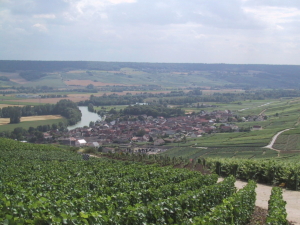 https://champagner.com/wp-content/uploads/2021/01/Cumieres-PLZ-51480.jpg
900
1200
admin
https://champagner.com/wp-content/uploads/2024/07/Champagner.com-Logo-300x300.png
admin2021-01-09 23:31:292024-08-03 21:42:07Cumières
https://champagner.com/wp-content/uploads/2021/01/Cumieres-PLZ-51480.jpg
900
1200
admin
https://champagner.com/wp-content/uploads/2024/07/Champagner.com-Logo-300x300.png
admin2021-01-09 23:31:292024-08-03 21:42:07Cumières https://champagner.com/wp-content/uploads/2021/01/Cuis-PLZ-51530.jpg
768
1024
admin
https://champagner.com/wp-content/uploads/2024/07/Champagner.com-Logo-300x300.png
admin2021-01-09 23:30:592024-08-03 21:42:45Cuis
https://champagner.com/wp-content/uploads/2021/01/Cuis-PLZ-51530.jpg
768
1024
admin
https://champagner.com/wp-content/uploads/2024/07/Champagner.com-Logo-300x300.png
admin2021-01-09 23:30:592024-08-03 21:42:45Cuis https://champagner.com/wp-content/uploads/2021/01/Cote-des-Blancs.png
860
1300
admin
https://champagner.com/wp-content/uploads/2024/07/Champagner.com-Logo-300x300.png
admin2021-01-09 23:28:302024-08-03 21:43:36Côte des Blancs
https://champagner.com/wp-content/uploads/2021/01/Cote-des-Blancs.png
860
1300
admin
https://champagner.com/wp-content/uploads/2024/07/Champagner.com-Logo-300x300.png
admin2021-01-09 23:28:302024-08-03 21:43:36Côte des Blancs https://champagner.com/wp-content/uploads/2021/01/Cote-des-Bar.png
1086
1407
admin
https://champagner.com/wp-content/uploads/2024/07/Champagner.com-Logo-300x300.png
admin2021-01-09 23:27:552024-08-03 21:44:16Côte des Bar
https://champagner.com/wp-content/uploads/2021/01/Cote-des-Bar.png
1086
1407
admin
https://champagner.com/wp-content/uploads/2024/07/Champagner.com-Logo-300x300.png
admin2021-01-09 23:27:552024-08-03 21:44:16Côte des Bar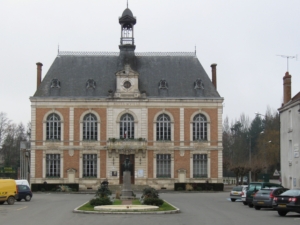 https://champagner.com/wp-content/uploads/2021/01/Coligny-PLZ-51130.jpg
1620
2160
admin
https://champagner.com/wp-content/uploads/2024/07/Champagner.com-Logo-300x300.png
admin2021-01-09 23:26:312024-08-03 21:45:13Coligny
https://champagner.com/wp-content/uploads/2021/01/Coligny-PLZ-51130.jpg
1620
2160
admin
https://champagner.com/wp-content/uploads/2024/07/Champagner.com-Logo-300x300.png
admin2021-01-09 23:26:312024-08-03 21:45:13Coligny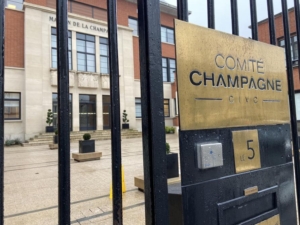 https://champagner.com/wp-content/uploads/2021/01/CIVC-comite-champagne.jpg
669
892
admin
https://champagner.com/wp-content/uploads/2024/07/Champagner.com-Logo-300x300.png
admin2021-01-09 23:25:432024-08-03 21:46:22CIVC
https://champagner.com/wp-content/uploads/2021/01/CIVC-comite-champagne.jpg
669
892
admin
https://champagner.com/wp-content/uploads/2024/07/Champagner.com-Logo-300x300.png
admin2021-01-09 23:25:432024-08-03 21:46:22CIVC https://champagner.com/wp-content/uploads/2021/01/Chouilly-PLZ-51530.jpg
665
1000
admin
https://champagner.com/wp-content/uploads/2024/07/Champagner.com-Logo-300x300.png
admin2021-01-09 23:24:202024-08-03 21:48:38Chouilly
https://champagner.com/wp-content/uploads/2021/01/Chouilly-PLZ-51530.jpg
665
1000
admin
https://champagner.com/wp-content/uploads/2024/07/Champagner.com-Logo-300x300.png
admin2021-01-09 23:24:202024-08-03 21:48:38Chouilly https://champagner.com/wp-content/uploads/2021/01/Chlorose.jpg
491
873
admin
https://champagner.com/wp-content/uploads/2024/07/Champagner.com-Logo-300x300.png
admin2021-01-09 23:12:392024-08-03 21:49:24Chlorosis
https://champagner.com/wp-content/uploads/2021/01/Chlorose.jpg
491
873
admin
https://champagner.com/wp-content/uploads/2024/07/Champagner.com-Logo-300x300.png
admin2021-01-09 23:12:392024-08-03 21:49:24Chlorosis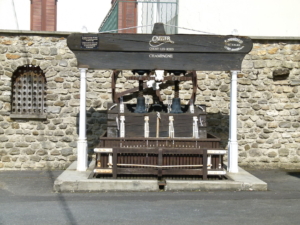 https://champagner.com/wp-content/uploads/2021/01/Chigny-les-Roses-PLZ-51500.jpg
688
917
admin
https://champagner.com/wp-content/uploads/2024/07/Champagner.com-Logo-300x300.png
admin2021-01-09 23:09:162024-08-03 21:50:24Chigny-les-Roses
https://champagner.com/wp-content/uploads/2021/01/Chigny-les-Roses-PLZ-51500.jpg
688
917
admin
https://champagner.com/wp-content/uploads/2024/07/Champagner.com-Logo-300x300.png
admin2021-01-09 23:09:162024-08-03 21:50:24Chigny-les-Roses https://champagner.com/wp-content/uploads/2021/01/Chaufferettes-Champagner.jpg
375
647
admin
https://champagner.com/wp-content/uploads/2024/07/Champagner.com-Logo-300x300.png
admin2021-01-09 23:02:152024-08-03 21:54:32Chaufferettes
https://champagner.com/wp-content/uploads/2021/01/Chaufferettes-Champagner.jpg
375
647
admin
https://champagner.com/wp-content/uploads/2024/07/Champagner.com-Logo-300x300.png
admin2021-01-09 23:02:152024-08-03 21:54:32Chaufferettes https://champagner.com/wp-content/uploads/2021/01/Champillon-PLZ-51160.jpg
1440
2560
admin
https://champagner.com/wp-content/uploads/2024/07/Champagner.com-Logo-300x300.png
admin2021-01-09 22:56:322024-08-03 21:55:46Champillon
https://champagner.com/wp-content/uploads/2021/01/Champillon-PLZ-51160.jpg
1440
2560
admin
https://champagner.com/wp-content/uploads/2024/07/Champagner.com-Logo-300x300.png
admin2021-01-09 22:56:322024-08-03 21:55:46Champillon https://champagner.com/wp-content/uploads/2024/07/Moet-Chandon-Champagner-Kuebel.webp
800
800
admin
https://champagner.com/wp-content/uploads/2024/07/Champagner.com-Logo-300x300.png
admin2021-01-09 22:55:522024-08-03 21:56:36Champagne house
https://champagner.com/wp-content/uploads/2024/07/Moet-Chandon-Champagner-Kuebel.webp
800
800
admin
https://champagner.com/wp-content/uploads/2024/07/Champagner.com-Logo-300x300.png
admin2021-01-09 22:55:522024-08-03 21:56:36Champagne house https://champagner.com/wp-content/uploads/2021/01/Chamery-PLZ-51500.jpg
750
1050
admin
https://champagner.com/wp-content/uploads/2024/07/Champagner.com-Logo-300x300.png
admin2021-01-09 22:55:072024-08-03 21:57:21Chamery
https://champagner.com/wp-content/uploads/2021/01/Chamery-PLZ-51500.jpg
750
1050
admin
https://champagner.com/wp-content/uploads/2024/07/Champagner.com-Logo-300x300.png
admin2021-01-09 22:55:072024-08-03 21:57:21Chamery https://champagner.com/wp-content/uploads/2021/01/Butte-de-Saran.jpg
600
900
admin
https://champagner.com/wp-content/uploads/2024/07/Champagner.com-Logo-300x300.png
admin2021-01-09 22:54:462024-08-03 21:58:45Butte de Saran
https://champagner.com/wp-content/uploads/2021/01/Butte-de-Saran.jpg
600
900
admin
https://champagner.com/wp-content/uploads/2024/07/Champagner.com-Logo-300x300.png
admin2021-01-09 22:54:462024-08-03 21:58:45Butte de Saran https://champagner.com/wp-content/uploads/2021/01/Brut-Zero.jpg
834
1800
admin
https://champagner.com/wp-content/uploads/2024/07/Champagner.com-Logo-300x300.png
admin2021-01-09 22:53:442024-08-03 21:59:21Brut Zero
https://champagner.com/wp-content/uploads/2021/01/Brut-Zero.jpg
834
1800
admin
https://champagner.com/wp-content/uploads/2024/07/Champagner.com-Logo-300x300.png
admin2021-01-09 22:53:442024-08-03 21:59:21Brut Zero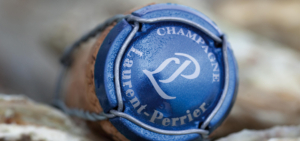 https://champagner.com/wp-content/uploads/2021/01/Brut-Non-Dosage.jpg
550
1170
admin
https://champagner.com/wp-content/uploads/2024/07/Champagner.com-Logo-300x300.png
admin2021-01-09 22:52:462024-08-03 22:00:41Brut Non Dosage
https://champagner.com/wp-content/uploads/2021/01/Brut-Non-Dosage.jpg
550
1170
admin
https://champagner.com/wp-content/uploads/2024/07/Champagner.com-Logo-300x300.png
admin2021-01-09 22:52:462024-08-03 22:00:41Brut Non Dosage https://champagner.com/wp-content/uploads/2021/01/Brut-Nature.jpg
430
650
admin
https://champagner.com/wp-content/uploads/2024/07/Champagner.com-Logo-300x300.png
admin2021-01-09 22:52:182024-08-03 22:01:25Brut Nature
https://champagner.com/wp-content/uploads/2021/01/Brut-Nature.jpg
430
650
admin
https://champagner.com/wp-content/uploads/2024/07/Champagner.com-Logo-300x300.png
admin2021-01-09 22:52:182024-08-03 22:01:25Brut Nature https://champagner.com/wp-content/uploads/2021/01/Bouzy-PLZ-51150.jpg
683
1024
admin
https://champagner.com/wp-content/uploads/2024/07/Champagner.com-Logo-300x300.png
admin2021-01-09 22:51:302024-08-03 22:02:07Bouzy
https://champagner.com/wp-content/uploads/2021/01/Bouzy-PLZ-51150.jpg
683
1024
admin
https://champagner.com/wp-content/uploads/2024/07/Champagner.com-Logo-300x300.png
admin2021-01-09 22:51:302024-08-03 22:02:07Bouzy https://champagner.com/wp-content/uploads/2021/01/Bisseuil-PLZ-51150.jpeg
182
278
admin
https://champagner.com/wp-content/uploads/2024/07/Champagner.com-Logo-300x300.png
admin2021-01-09 22:50:442024-08-03 22:02:44Bisseuil
https://champagner.com/wp-content/uploads/2021/01/Bisseuil-PLZ-51150.jpeg
182
278
admin
https://champagner.com/wp-content/uploads/2024/07/Champagner.com-Logo-300x300.png
admin2021-01-09 22:50:442024-08-03 22:02:44Bisseuil https://champagner.com/wp-content/uploads/2021/01/Billy-le-Grand-PLZ-51400.jpg
853
1280
admin
https://champagner.com/wp-content/uploads/2024/07/Champagner.com-Logo-300x300.png
admin2021-01-09 22:49:492024-08-03 22:03:24Billy-le-Grand
https://champagner.com/wp-content/uploads/2021/01/Billy-le-Grand-PLZ-51400.jpg
853
1280
admin
https://champagner.com/wp-content/uploads/2024/07/Champagner.com-Logo-300x300.png
admin2021-01-09 22:49:492024-08-03 22:03:24Billy-le-Grand https://champagner.com/wp-content/uploads/2021/01/Bezannes-PLZ-51430.jpg
720
960
admin
https://champagner.com/wp-content/uploads/2024/07/Champagner.com-Logo-300x300.png
admin2021-01-09 22:48:342024-08-03 22:04:02Bezannes
https://champagner.com/wp-content/uploads/2021/01/Bezannes-PLZ-51430.jpg
720
960
admin
https://champagner.com/wp-content/uploads/2024/07/Champagner.com-Logo-300x300.png
admin2021-01-09 22:48:342024-08-03 22:04:02Bezannes https://champagner.com/wp-content/uploads/2021/01/Bergeres-les-Vertus-PLZ-51130.jpg
520
1920
admin
https://champagner.com/wp-content/uploads/2024/07/Champagner.com-Logo-300x300.png
admin2021-01-09 22:47:452024-08-03 22:04:41Bergères-lès-Vertus
https://champagner.com/wp-content/uploads/2021/01/Bergeres-les-Vertus-PLZ-51130.jpg
520
1920
admin
https://champagner.com/wp-content/uploads/2024/07/Champagner.com-Logo-300x300.png
admin2021-01-09 22:47:452024-08-03 22:04:41Bergères-lès-Vertus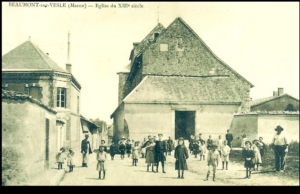 https://champagner.com/wp-content/uploads/2021/01/Beaumont-sur-Vesle-PLZ-51360.jpg
644
997
admin
https://champagner.com/wp-content/uploads/2024/07/Champagner.com-Logo-300x300.png
admin2021-01-09 22:46:562024-08-03 22:05:29Beaumont-sur-Vesle
https://champagner.com/wp-content/uploads/2021/01/Beaumont-sur-Vesle-PLZ-51360.jpg
644
997
admin
https://champagner.com/wp-content/uploads/2024/07/Champagner.com-Logo-300x300.png
admin2021-01-09 22:46:562024-08-03 22:05:29Beaumont-sur-Vesle champagne.com
https://champagner.com/wp-content/uploads/2018/05/catter-champagner-blanc-de-noir.jpg
402
700
admin
https://champagner.com/wp-content/uploads/2024/07/Champagner.com-Logo-300x300.png
admin2021-01-09 22:46:022024-08-03 22:07:33BdN
champagne.com
https://champagner.com/wp-content/uploads/2018/05/catter-champagner-blanc-de-noir.jpg
402
700
admin
https://champagner.com/wp-content/uploads/2024/07/Champagner.com-Logo-300x300.png
admin2021-01-09 22:46:022024-08-03 22:07:33BdN https://champagner.com/wp-content/uploads/2024/07/Champagner.com-Logo-300x300.png
1
1
admin
https://champagner.com/wp-content/uploads/2024/07/Champagner.com-Logo-300x300.png
admin2021-01-09 22:45:302024-08-03 22:08:25BdB
https://champagner.com/wp-content/uploads/2024/07/Champagner.com-Logo-300x300.png
1
1
admin
https://champagner.com/wp-content/uploads/2024/07/Champagner.com-Logo-300x300.png
admin2021-01-09 22:45:302024-08-03 22:08:25BdB https://champagner.com/wp-content/uploads/2021/01/Ay-PLZ-51160.jpg
900
1200
admin
https://champagner.com/wp-content/uploads/2024/07/Champagner.com-Logo-300x300.png
admin2021-01-09 22:44:202024-11-04 13:07:13Ay
https://champagner.com/wp-content/uploads/2021/01/Ay-PLZ-51160.jpg
900
1200
admin
https://champagner.com/wp-content/uploads/2024/07/Champagner.com-Logo-300x300.png
admin2021-01-09 22:44:202024-11-04 13:07:13Ay https://champagner.com/wp-content/uploads/2021/01/Avize-PLZ-51190.webp
375
500
admin
https://champagner.com/wp-content/uploads/2024/07/Champagner.com-Logo-300x300.png
admin2021-01-09 22:42:592024-08-03 22:09:42Avize
https://champagner.com/wp-content/uploads/2021/01/Avize-PLZ-51190.webp
375
500
admin
https://champagner.com/wp-content/uploads/2024/07/Champagner.com-Logo-300x300.png
admin2021-01-09 22:42:592024-08-03 22:09:42Avize https://champagner.com/wp-content/uploads/2021/01/Avenay-PLZ-51160.jpg
499
752
admin
https://champagner.com/wp-content/uploads/2024/07/Champagner.com-Logo-300x300.png
admin2021-01-09 22:42:262024-08-03 22:10:29Avenay
https://champagner.com/wp-content/uploads/2021/01/Avenay-PLZ-51160.jpg
499
752
admin
https://champagner.com/wp-content/uploads/2024/07/Champagner.com-Logo-300x300.png
admin2021-01-09 22:42:262024-08-03 22:10:29Avenay https://champagner.com/wp-content/uploads/2021/01/Autochthon-Champagner.jpg
1080
1920
admin
https://champagner.com/wp-content/uploads/2024/07/Champagner.com-Logo-300x300.png
admin2021-01-09 22:41:442024-11-04 13:04:05Autochthonous
https://champagner.com/wp-content/uploads/2021/01/Autochthon-Champagner.jpg
1080
1920
admin
https://champagner.com/wp-content/uploads/2024/07/Champagner.com-Logo-300x300.png
admin2021-01-09 22:41:442024-11-04 13:04:05Autochthonous https://champagner.com/wp-content/uploads/2024/07/Weinreben-Champagne.png
593
898
admin
https://champagner.com/wp-content/uploads/2024/07/Champagner.com-Logo-300x300.png
admin2021-01-09 22:40:182024-11-04 12:59:36Arbane
https://champagner.com/wp-content/uploads/2024/07/Weinreben-Champagne.png
593
898
admin
https://champagner.com/wp-content/uploads/2024/07/Champagner.com-Logo-300x300.png
admin2021-01-09 22:40:182024-11-04 12:59:36Arbane https://champagner.com/wp-content/uploads/2021/01/Ambonnay-PLZ-51150.webp
450
600
admin
https://champagner.com/wp-content/uploads/2024/07/Champagner.com-Logo-300x300.png
admin2021-01-09 22:38:102024-11-04 12:56:59Ambonnay
https://champagner.com/wp-content/uploads/2021/01/Ambonnay-PLZ-51150.webp
450
600
admin
https://champagner.com/wp-content/uploads/2024/07/Champagner.com-Logo-300x300.png
admin2021-01-09 22:38:102024-11-04 12:56:59Ambonnay https://champagner.com/wp-content/uploads/2024/07/Champagner.com-Logo-300x300.png
1
1
admin
https://champagner.com/wp-content/uploads/2024/07/Champagner.com-Logo-300x300.png
admin2021-01-09 22:37:022024-11-04 12:54:00Astringency
https://champagner.com/wp-content/uploads/2024/07/Champagner.com-Logo-300x300.png
1
1
admin
https://champagner.com/wp-content/uploads/2024/07/Champagner.com-Logo-300x300.png
admin2021-01-09 22:37:022024-11-04 12:54:00Astringency https://champagner.com/wp-content/uploads/2021/01/A-la-volée.jpg
900
1600
admin
https://champagner.com/wp-content/uploads/2024/07/Champagner.com-Logo-300x300.png
admin2021-01-09 22:36:282024-08-03 22:12:33A la volée
https://champagner.com/wp-content/uploads/2021/01/A-la-volée.jpg
900
1600
admin
https://champagner.com/wp-content/uploads/2024/07/Champagner.com-Logo-300x300.png
admin2021-01-09 22:36:282024-08-03 22:12:33A la volée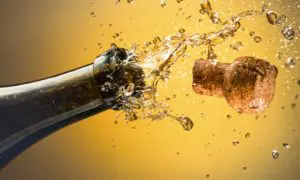 champagne.com
https://champagner.com/wp-content/uploads/2018/04/champagner-schauer.jpg
900
1500
admin
https://champagner.com/wp-content/uploads/2024/07/Champagner.com-Logo-300x300.png
admin2021-01-09 22:35:482024-11-04 12:51:44Dégorgement à la Glace
champagne.com
https://champagner.com/wp-content/uploads/2018/04/champagner-schauer.jpg
900
1500
admin
https://champagner.com/wp-content/uploads/2024/07/Champagner.com-Logo-300x300.png
admin2021-01-09 22:35:482024-11-04 12:51:44Dégorgement à la Glace https://champagner.com/wp-content/uploads/2024/07/Champagner.com-Logo-300x300.png
1
1
admin
https://champagner.com/wp-content/uploads/2024/07/Champagner.com-Logo-300x300.png
admin2021-01-09 22:34:422024-08-03 22:14:22Champagne bottles
https://champagner.com/wp-content/uploads/2024/07/Champagner.com-Logo-300x300.png
1
1
admin
https://champagner.com/wp-content/uploads/2024/07/Champagner.com-Logo-300x300.png
admin2021-01-09 22:34:422024-08-03 22:14:22Champagne bottles https://champagner.com/wp-content/uploads/2021/01/champagner-korken.jpg
787
1181
admin
https://champagner.com/wp-content/uploads/2024/07/Champagner.com-Logo-300x300.png
admin2021-01-09 22:25:422024-08-03 22:15:15Cork
https://champagner.com/wp-content/uploads/2021/01/champagner-korken.jpg
787
1181
admin
https://champagner.com/wp-content/uploads/2024/07/Champagner.com-Logo-300x300.png
admin2021-01-09 22:25:422024-08-03 22:15:15Cork https://champagner.com/wp-content/uploads/2021/01/Viticulture.jpg
1707
2560
admin
https://champagner.com/wp-content/uploads/2024/07/Champagner.com-Logo-300x300.png
admin2021-01-09 22:24:032024-08-03 22:15:56Viticulture
https://champagner.com/wp-content/uploads/2021/01/Viticulture.jpg
1707
2560
admin
https://champagner.com/wp-content/uploads/2024/07/Champagner.com-Logo-300x300.png
admin2021-01-09 22:24:032024-08-03 22:15:56Viticulture https://champagner.com/wp-content/uploads/2024/07/Champagner.com-Logo-300x300.png
1
1
admin
https://champagner.com/wp-content/uploads/2024/07/Champagner.com-Logo-300x300.png
admin2021-01-09 22:23:312024-08-03 22:16:35Viniculture
https://champagner.com/wp-content/uploads/2024/07/Champagner.com-Logo-300x300.png
1
1
admin
https://champagner.com/wp-content/uploads/2024/07/Champagner.com-Logo-300x300.png
admin2021-01-09 22:23:312024-08-03 22:16:35Viniculture https://champagner.com/wp-content/uploads/2024/07/Champagner.com-Logo-300x300.png
1
1
admin
https://champagner.com/wp-content/uploads/2024/07/Champagner.com-Logo-300x300.png
admin2021-01-09 22:22:362024-08-03 22:17:47Vin Gris
https://champagner.com/wp-content/uploads/2024/07/Champagner.com-Logo-300x300.png
1
1
admin
https://champagner.com/wp-content/uploads/2024/07/Champagner.com-Logo-300x300.png
admin2021-01-09 22:22:362024-08-03 22:17:47Vin Gris https://champagner.com/wp-content/uploads/2024/07/Champagner.com-Logo-300x300.png
1
1
admin
https://champagner.com/wp-content/uploads/2024/07/Champagner.com-Logo-300x300.png
admin2021-01-09 22:22:052024-08-03 22:18:23Vignoble
https://champagner.com/wp-content/uploads/2024/07/Champagner.com-Logo-300x300.png
1
1
admin
https://champagner.com/wp-content/uploads/2024/07/Champagner.com-Logo-300x300.png
admin2021-01-09 22:22:052024-08-03 22:18:23Vignoble https://champagner.com/wp-content/uploads/2024/07/Champagner.com-Logo-300x300.png
1
1
admin
https://champagner.com/wp-content/uploads/2024/07/Champagner.com-Logo-300x300.png
admin2021-01-09 22:13:582024-08-03 22:18:54Vigne
https://champagner.com/wp-content/uploads/2024/07/Champagner.com-Logo-300x300.png
1
1
admin
https://champagner.com/wp-content/uploads/2024/07/Champagner.com-Logo-300x300.png
admin2021-01-09 22:13:582024-08-03 22:18:54Vigne https://champagner.com/wp-content/uploads/2021/01/Vieilles-Vigne.jpg
638
850
admin
https://champagner.com/wp-content/uploads/2024/07/Champagner.com-Logo-300x300.png
admin2021-01-09 22:12:422024-08-03 22:19:29Vieilles Vignes
https://champagner.com/wp-content/uploads/2021/01/Vieilles-Vigne.jpg
638
850
admin
https://champagner.com/wp-content/uploads/2024/07/Champagner.com-Logo-300x300.png
admin2021-01-09 22:12:422024-08-03 22:19:29Vieilles Vignes https://champagner.com/wp-content/uploads/2024/07/Veuve-Clicquot-1950.jpg
1674
1200
admin
https://champagner.com/wp-content/uploads/2024/07/Champagner.com-Logo-300x300.png
admin2021-01-09 22:11:442024-08-03 22:20:57Veuve Clicquot
https://champagner.com/wp-content/uploads/2024/07/Veuve-Clicquot-1950.jpg
1674
1200
admin
https://champagner.com/wp-content/uploads/2024/07/Champagner.com-Logo-300x300.png
admin2021-01-09 22:11:442024-08-03 22:20:57Veuve Clicquot https://champagner.com/wp-content/uploads/2024/07/Ferdinand-Bonnet-Champagner-Weinlese.webp
1298
1304
admin
https://champagner.com/wp-content/uploads/2024/07/Champagner.com-Logo-300x300.png
admin2021-01-09 22:10:312024-08-03 22:21:39Vendange
https://champagner.com/wp-content/uploads/2024/07/Ferdinand-Bonnet-Champagner-Weinlese.webp
1298
1304
admin
https://champagner.com/wp-content/uploads/2024/07/Champagner.com-Logo-300x300.png
admin2021-01-09 22:10:312024-08-03 22:21:39Vendange https://champagner.com/wp-content/uploads/2021/01/Traubensorten-Champagner.jpeg
453
893
admin
https://champagner.com/wp-content/uploads/2024/07/Champagner.com-Logo-300x300.png
admin2021-01-09 22:09:592024-08-03 07:17:50Grape varieties
https://champagner.com/wp-content/uploads/2021/01/Traubensorten-Champagner.jpeg
453
893
admin
https://champagner.com/wp-content/uploads/2024/07/Champagner.com-Logo-300x300.png
admin2021-01-09 22:09:592024-08-03 07:17:50Grape varieties https://champagner.com/wp-content/uploads/2024/07/Champagner.com-Logo-300x300.png
1
1
admin
https://champagner.com/wp-content/uploads/2024/07/Champagner.com-Logo-300x300.png
admin2021-01-09 22:09:052024-08-03 22:22:26Terroir
https://champagner.com/wp-content/uploads/2024/07/Champagner.com-Logo-300x300.png
1
1
admin
https://champagner.com/wp-content/uploads/2024/07/Champagner.com-Logo-300x300.png
admin2021-01-09 22:09:052024-08-03 22:22:26Terroir https://champagner.com/wp-content/uploads/2024/07/Champagner.com-Logo-300x300.png
1
1
admin
https://champagner.com/wp-content/uploads/2024/07/Champagner.com-Logo-300x300.png
admin2021-01-09 22:08:252024-08-03 07:08:09Tannin
https://champagner.com/wp-content/uploads/2024/07/Champagner.com-Logo-300x300.png
1
1
admin
https://champagner.com/wp-content/uploads/2024/07/Champagner.com-Logo-300x300.png
admin2021-01-09 22:08:252024-08-03 07:08:09Tannin https://champagner.com/wp-content/uploads/2024/07/Champagner.com-Logo-300x300.png
1
1
admin
https://champagner.com/wp-content/uploads/2024/07/Champagner.com-Logo-300x300.png
admin2021-01-09 22:07:392024-08-03 22:23:20Waist
https://champagner.com/wp-content/uploads/2024/07/Champagner.com-Logo-300x300.png
1
1
admin
https://champagner.com/wp-content/uploads/2024/07/Champagner.com-Logo-300x300.png
admin2021-01-09 22:07:392024-08-03 22:23:20Waist https://champagner.com/wp-content/uploads/2024/07/Champagner.com-Logo-300x300.png
1
1
admin
https://champagner.com/wp-content/uploads/2024/07/Champagner.com-Logo-300x300.png
admin2021-01-09 22:06:562024-08-03 07:04:23Tâché
https://champagner.com/wp-content/uploads/2024/07/Champagner.com-Logo-300x300.png
1
1
admin
https://champagner.com/wp-content/uploads/2024/07/Champagner.com-Logo-300x300.png
admin2021-01-09 22:06:562024-08-03 07:04:23Tâché https://champagner.com/wp-content/uploads/2024/07/Champagner.com-Logo-300x300.png
1
1
admin
https://champagner.com/wp-content/uploads/2024/07/Champagner.com-Logo-300x300.png
admin2021-01-09 22:06:172024-08-03 07:02:14Sparkling wine
https://champagner.com/wp-content/uploads/2024/07/Champagner.com-Logo-300x300.png
1
1
admin
https://champagner.com/wp-content/uploads/2024/07/Champagner.com-Logo-300x300.png
admin2021-01-09 22:06:172024-08-03 07:02:14Sparkling wine https://champagner.com/wp-content/uploads/2024/07/Champagner.com-Logo-300x300.png
1
1
admin
https://champagner.com/wp-content/uploads/2024/07/Champagner.com-Logo-300x300.png
admin2021-01-09 22:05:402024-08-03 22:24:52Sec
https://champagner.com/wp-content/uploads/2024/07/Champagner.com-Logo-300x300.png
1
1
admin
https://champagner.com/wp-content/uploads/2024/07/Champagner.com-Logo-300x300.png
admin2021-01-09 22:05:402024-08-03 22:24:52Sec https://champagner.com/wp-content/uploads/2024/07/Champagner.com-Logo-300x300.png
1
1
admin
https://champagner.com/wp-content/uploads/2024/07/Champagner.com-Logo-300x300.png
admin2021-01-09 22:05:032024-08-03 22:25:27Ship christening
https://champagner.com/wp-content/uploads/2024/07/Champagner.com-Logo-300x300.png
1
1
admin
https://champagner.com/wp-content/uploads/2024/07/Champagner.com-Logo-300x300.png
admin2021-01-09 22:05:032024-08-03 22:25:27Ship christening https://champagner.com/wp-content/uploads/2024/07/Champagner.com-Logo-300x300.png
1
1
admin
https://champagner.com/wp-content/uploads/2024/07/Champagner.com-Logo-300x300.png
admin2021-01-09 22:01:372024-08-03 22:32:00Prosecco
https://champagner.com/wp-content/uploads/2024/07/Champagner.com-Logo-300x300.png
1
1
admin
https://champagner.com/wp-content/uploads/2024/07/Champagner.com-Logo-300x300.png
admin2021-01-09 22:01:372024-08-03 22:32:00Prosecco https://champagner.com/wp-content/uploads/2021/01/Asti-Spumante.jpg
408
1300
admin
https://champagner.com/wp-content/uploads/2024/07/Champagner.com-Logo-300x300.png
admin2021-01-09 22:01:002024-11-04 13:01:26Asti Spumante
https://champagner.com/wp-content/uploads/2021/01/Asti-Spumante.jpg
408
1300
admin
https://champagner.com/wp-content/uploads/2024/07/Champagner.com-Logo-300x300.png
admin2021-01-09 22:01:002024-11-04 13:01:26Asti Spumante https://champagner.com/wp-content/uploads/2021/01/schaumwein.jpg
809
1440
admin
https://champagner.com/wp-content/uploads/2024/07/Champagner.com-Logo-300x300.png
admin2021-01-09 21:59:092024-08-03 22:35:14Sparkling wine
https://champagner.com/wp-content/uploads/2021/01/schaumwein.jpg
809
1440
admin
https://champagner.com/wp-content/uploads/2024/07/Champagner.com-Logo-300x300.png
admin2021-01-09 21:59:092024-08-03 22:35:14Sparkling wine https://champagner.com/wp-content/uploads/2024/07/Champagner.com-Logo-300x300.png
1
1
admin
https://champagner.com/wp-content/uploads/2024/07/Champagner.com-Logo-300x300.png
admin2021-01-09 21:58:032024-08-03 22:39:34Acid
https://champagner.com/wp-content/uploads/2024/07/Champagner.com-Logo-300x300.png
1
1
admin
https://champagner.com/wp-content/uploads/2024/07/Champagner.com-Logo-300x300.png
admin2021-01-09 21:58:032024-08-03 22:39:34Acid https://champagner.com/wp-content/uploads/2024/07/Champagner.com-Logo-300x300.png
1
1
admin
https://champagner.com/wp-content/uploads/2024/07/Champagner.com-Logo-300x300.png
admin2021-01-09 21:57:232024-08-03 22:41:08Sans-année
https://champagner.com/wp-content/uploads/2024/07/Champagner.com-Logo-300x300.png
1
1
admin
https://champagner.com/wp-content/uploads/2024/07/Champagner.com-Logo-300x300.png
admin2021-01-09 21:57:232024-08-03 22:41:08Sans-année https://champagner.com/wp-content/uploads/2021/01/Saint-Evremond.jpg
512
1024
admin
https://champagner.com/wp-content/uploads/2024/07/Champagner.com-Logo-300x300.png
admin2021-01-09 21:56:482024-08-03 02:30:20Saint-Evremond
https://champagner.com/wp-content/uploads/2021/01/Saint-Evremond.jpg
512
1024
admin
https://champagner.com/wp-content/uploads/2024/07/Champagner.com-Logo-300x300.png
admin2021-01-09 21:56:482024-08-03 02:30:20Saint-Evremond https://champagner.com/wp-content/uploads/2021/01/gyropalette.webp
347
576
admin
https://champagner.com/wp-content/uploads/2024/07/Champagner.com-Logo-300x300.png
admin2021-01-09 21:56:022024-08-03 01:43:33Vibrating desk
https://champagner.com/wp-content/uploads/2021/01/gyropalette.webp
347
576
admin
https://champagner.com/wp-content/uploads/2024/07/Champagner.com-Logo-300x300.png
admin2021-01-09 21:56:022024-08-03 01:43:33Vibrating desk https://champagner.com/wp-content/uploads/2024/07/Champagner.com-Logo-300x300.png
1
1
admin
https://champagner.com/wp-content/uploads/2024/07/Champagner.com-Logo-300x300.png
admin2021-01-09 21:54:082024-08-03 01:32:17Shake
https://champagner.com/wp-content/uploads/2024/07/Champagner.com-Logo-300x300.png
1
1
admin
https://champagner.com/wp-content/uploads/2024/07/Champagner.com-Logo-300x300.png
admin2021-01-09 21:54:082024-08-03 01:32:17Shake https://champagner.com/wp-content/uploads/2024/07/Ruinart-Champagner.jpg
630
1200
admin
https://champagner.com/wp-content/uploads/2024/07/Champagner.com-Logo-300x300.png
admin2021-01-09 21:53:082024-08-03 01:07:39Ruinart
https://champagner.com/wp-content/uploads/2024/07/Ruinart-Champagner.jpg
630
1200
admin
https://champagner.com/wp-content/uploads/2024/07/Champagner.com-Logo-300x300.png
admin2021-01-09 21:53:082024-08-03 01:07:39Ruinart https://champagner.com/wp-content/uploads/2024/07/Champagner.com-Logo-300x300.png
1
1
admin
https://champagner.com/wp-content/uploads/2024/07/Champagner.com-Logo-300x300.png
admin2021-01-09 21:52:162024-08-03 01:05:23Rosé des Riceys
https://champagner.com/wp-content/uploads/2024/07/Champagner.com-Logo-300x300.png
1
1
admin
https://champagner.com/wp-content/uploads/2024/07/Champagner.com-Logo-300x300.png
admin2021-01-09 21:52:162024-08-03 01:05:23Rosé des Riceys champagne.com
https://champagner.com/wp-content/uploads/2018/04/besserat-de-bellefon-champagner-rose.jpg
1081
1812
admin
https://champagner.com/wp-content/uploads/2024/07/Champagner.com-Logo-300x300.png
admin2021-01-09 21:51:352024-08-03 01:03:32Rosé
champagne.com
https://champagner.com/wp-content/uploads/2018/04/besserat-de-bellefon-champagner-rose.jpg
1081
1812
admin
https://champagner.com/wp-content/uploads/2024/07/Champagner.com-Logo-300x300.png
admin2021-01-09 21:51:352024-08-03 01:03:32Rosé https://champagner.com/wp-content/uploads/2021/01/louis-roederer.jpg
447
1440
admin
https://champagner.com/wp-content/uploads/2024/07/Champagner.com-Logo-300x300.png
admin2021-01-09 21:50:302024-08-03 01:01:51Roederer
https://champagner.com/wp-content/uploads/2021/01/louis-roederer.jpg
447
1440
admin
https://champagner.com/wp-content/uploads/2024/07/Champagner.com-Logo-300x300.png
admin2021-01-09 21:50:302024-08-03 01:01:51Roederer https://champagner.com/wp-content/uploads/2024/07/Champagner.com-Logo-300x300.png
1
1
admin
https://champagner.com/wp-content/uploads/2024/07/Champagner.com-Logo-300x300.png
admin2021-01-09 21:49:552024-08-03 00:58:57Residual sugar
https://champagner.com/wp-content/uploads/2024/07/Champagner.com-Logo-300x300.png
1
1
admin
https://champagner.com/wp-content/uploads/2024/07/Champagner.com-Logo-300x300.png
admin2021-01-09 21:49:552024-08-03 00:58:57Residual sugar https://champagner.com/wp-content/uploads/2024/07/Champagner.com-Logo-300x300.png
1
1
admin
https://champagner.com/wp-content/uploads/2024/07/Champagner.com-Logo-300x300.png
admin2021-01-09 21:49:102024-08-03 00:39:59Remueur
https://champagner.com/wp-content/uploads/2024/07/Champagner.com-Logo-300x300.png
1
1
admin
https://champagner.com/wp-content/uploads/2024/07/Champagner.com-Logo-300x300.png
admin2021-01-09 21:49:102024-08-03 00:39:59Remueur https://champagner.com/wp-content/uploads/2024/07/Champagner.com-Logo-300x300.png
1
1
admin
https://champagner.com/wp-content/uploads/2024/07/Champagner.com-Logo-300x300.png
admin2021-01-09 21:48:302024-08-03 00:38:14Réduction François
https://champagner.com/wp-content/uploads/2024/07/Champagner.com-Logo-300x300.png
1
1
admin
https://champagner.com/wp-content/uploads/2024/07/Champagner.com-Logo-300x300.png
admin2021-01-09 21:48:302024-08-03 00:38:14Réduction François https://champagner.com/wp-content/uploads/2024/07/Champagner.com-Logo-300x300.png
1
1
admin
https://champagner.com/wp-content/uploads/2024/07/Champagner.com-Logo-300x300.png
admin2021-01-09 21:47:512024-08-03 00:36:10Récoltant-Manipulant (R.M.)
https://champagner.com/wp-content/uploads/2024/07/Champagner.com-Logo-300x300.png
1
1
admin
https://champagner.com/wp-content/uploads/2024/07/Champagner.com-Logo-300x300.png
admin2021-01-09 21:47:512024-08-03 00:36:10Récoltant-Manipulant (R.M.) https://champagner.com/wp-content/uploads/2024/07/Champagner.com-Logo-300x300.png
1
1
admin
https://champagner.com/wp-content/uploads/2024/07/Champagner.com-Logo-300x300.png
admin2021-01-09 21:47:152024-08-03 00:20:47Récolte
https://champagner.com/wp-content/uploads/2024/07/Champagner.com-Logo-300x300.png
1
1
admin
https://champagner.com/wp-content/uploads/2024/07/Champagner.com-Logo-300x300.png
admin2021-01-09 21:47:152024-08-03 00:20:47Récolte https://champagner.com/wp-content/uploads/2024/07/Champagner.com-Logo-300x300.png
1
1
admin
https://champagner.com/wp-content/uploads/2024/07/Champagner.com-Logo-300x300.png
admin2021-01-09 21:46:222024-08-03 00:19:27Phylloxera
https://champagner.com/wp-content/uploads/2024/07/Champagner.com-Logo-300x300.png
1
1
admin
https://champagner.com/wp-content/uploads/2024/07/Champagner.com-Logo-300x300.png
admin2021-01-09 21:46:222024-08-03 00:19:27Phylloxera https://champagner.com/wp-content/uploads/2024/07/Champagner.com-Logo-300x300.png
1
1
admin
https://champagner.com/wp-content/uploads/2024/07/Champagner.com-Logo-300x300.png
admin2021-01-09 21:45:162024-08-03 00:17:41Rebêche
https://champagner.com/wp-content/uploads/2024/07/Champagner.com-Logo-300x300.png
1
1
admin
https://champagner.com/wp-content/uploads/2024/07/Champagner.com-Logo-300x300.png
admin2021-01-09 21:45:162024-08-03 00:17:41Rebêche https://champagner.com/wp-content/uploads/2024/07/Champagner.com-Logo-300x300.png
1
1
admin
https://champagner.com/wp-content/uploads/2024/07/Champagner.com-Logo-300x300.png
admin2021-01-09 21:44:042024-08-03 00:15:58Ratafia de Champagne
https://champagner.com/wp-content/uploads/2024/07/Champagner.com-Logo-300x300.png
1
1
admin
https://champagner.com/wp-content/uploads/2024/07/Champagner.com-Logo-300x300.png
admin2021-01-09 21:44:042024-08-03 00:15:58Ratafia de Champagne https://champagner.com/wp-content/uploads/2024/07/Champagner.com-Logo-300x300.png
1
1
admin
https://champagner.com/wp-content/uploads/2024/07/Champagner.com-Logo-300x300.png
admin2021-01-09 21:42:382024-08-03 00:14:18Rappen
https://champagner.com/wp-content/uploads/2024/07/Champagner.com-Logo-300x300.png
1
1
admin
https://champagner.com/wp-content/uploads/2024/07/Champagner.com-Logo-300x300.png
admin2021-01-09 21:42:382024-08-03 00:14:18Rappen https://champagner.com/wp-content/uploads/2024/07/Champagner.com-Logo-300x300.png
1
1
admin
https://champagner.com/wp-content/uploads/2024/07/Champagner.com-Logo-300x300.png
admin2021-01-09 21:41:332024-08-03 00:12:33Pressoir
https://champagner.com/wp-content/uploads/2024/07/Champagner.com-Logo-300x300.png
1
1
admin
https://champagner.com/wp-content/uploads/2024/07/Champagner.com-Logo-300x300.png
admin2021-01-09 21:41:332024-08-03 00:12:33Pressoir champagne.com
https://champagner.com/wp-content/uploads/2021/01/domaine-pommery.jpg
760
1360
admin
https://champagner.com/wp-content/uploads/2024/07/Champagner.com-Logo-300x300.png
admin2021-01-09 21:40:272024-08-03 00:11:00Pommery
champagne.com
https://champagner.com/wp-content/uploads/2021/01/domaine-pommery.jpg
760
1360
admin
https://champagner.com/wp-content/uploads/2024/07/Champagner.com-Logo-300x300.png
admin2021-01-09 21:40:272024-08-03 00:11:00Pommery champagne.com
https://champagner.com/wp-content/uploads/2021/01/coulournat-gilles-champagne.png
700
700
admin
https://champagner.com/wp-content/uploads/2024/07/Champagner.com-Logo-300x300.png
admin2021-01-09 21:39:232024-08-03 00:09:16Placomusophilia
champagne.com
https://champagner.com/wp-content/uploads/2021/01/coulournat-gilles-champagne.png
700
700
admin
https://champagner.com/wp-content/uploads/2024/07/Champagner.com-Logo-300x300.png
admin2021-01-09 21:39:232024-08-03 00:09:16Placomusophilia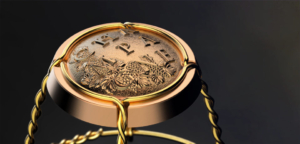 https://champagner.com/wp-content/uploads/2021/01/Capsules-Muselets-Plaque-Champagner-Deckel.jpg
462
960
admin
https://champagner.com/wp-content/uploads/2024/07/Champagner.com-Logo-300x300.png
admin2021-01-09 21:37:312024-08-03 00:07:34Plaque
https://champagner.com/wp-content/uploads/2021/01/Capsules-Muselets-Plaque-Champagner-Deckel.jpg
462
960
admin
https://champagner.com/wp-content/uploads/2024/07/Champagner.com-Logo-300x300.png
admin2021-01-09 21:37:312024-08-03 00:07:34Plaque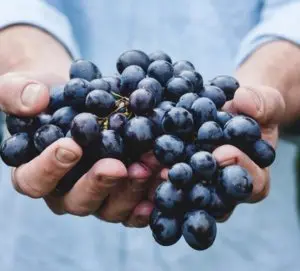 champagne.com
https://champagner.com/wp-content/uploads/2018/05/canard-duchene-champagner-pinot-noir.jpg
514
570
admin
https://champagner.com/wp-content/uploads/2024/07/Champagner.com-Logo-300x300.png
admin2021-01-09 21:36:412024-08-03 00:06:26Pinot Noir
champagne.com
https://champagner.com/wp-content/uploads/2018/05/canard-duchene-champagner-pinot-noir.jpg
514
570
admin
https://champagner.com/wp-content/uploads/2024/07/Champagner.com-Logo-300x300.png
admin2021-01-09 21:36:412024-08-03 00:06:26Pinot Noir https://champagner.com/wp-content/uploads/2024/07/Champagner.com-Logo-300x300.png
1
1
admin
https://champagner.com/wp-content/uploads/2024/07/Champagner.com-Logo-300x300.png
admin2021-01-09 21:35:442024-08-03 00:03:53Pinot Meunier
https://champagner.com/wp-content/uploads/2024/07/Champagner.com-Logo-300x300.png
1
1
admin
https://champagner.com/wp-content/uploads/2024/07/Champagner.com-Logo-300x300.png
admin2021-01-09 21:35:442024-08-03 00:03:53Pinot Meunier https://champagner.com/wp-content/uploads/2024/07/Champagner.com-Logo-300x300.png
1
1
admin
https://champagner.com/wp-content/uploads/2024/07/Champagner.com-Logo-300x300.png
admin2021-01-09 21:35:062024-08-03 00:01:58Pinot Gris
https://champagner.com/wp-content/uploads/2024/07/Champagner.com-Logo-300x300.png
1
1
admin
https://champagner.com/wp-content/uploads/2024/07/Champagner.com-Logo-300x300.png
admin2021-01-09 21:35:062024-08-03 00:01:58Pinot Gris https://champagner.com/wp-content/uploads/2024/07/Champagner.com-Logo-300x300.png
1
1
admin
https://champagner.com/wp-content/uploads/2024/07/Champagner.com-Logo-300x300.png
admin2021-01-09 21:34:052024-08-02 23:58:02Pétillant
https://champagner.com/wp-content/uploads/2024/07/Champagner.com-Logo-300x300.png
1
1
admin
https://champagner.com/wp-content/uploads/2024/07/Champagner.com-Logo-300x300.png
admin2021-01-09 21:34:052024-08-02 23:58:02Pétillant https://champagner.com/wp-content/uploads/2024/07/Champagner.com-Logo-300x300.png
1
1
admin
https://champagner.com/wp-content/uploads/2024/07/Champagner.com-Logo-300x300.png
admin2021-01-09 21:32:582024-08-02 23:54:36Perlant
https://champagner.com/wp-content/uploads/2024/07/Champagner.com-Logo-300x300.png
1
1
admin
https://champagner.com/wp-content/uploads/2024/07/Champagner.com-Logo-300x300.png
admin2021-01-09 21:32:582024-08-02 23:54:36Perlant https://champagner.com/wp-content/uploads/2024/07/Champagner.com-Logo-300x300.png
1
1
admin
https://champagner.com/wp-content/uploads/2024/07/Champagner.com-Logo-300x300.png
admin2021-01-09 21:30:062024-08-02 23:53:04Oxidation
https://champagner.com/wp-content/uploads/2024/07/Champagner.com-Logo-300x300.png
1
1
admin
https://champagner.com/wp-content/uploads/2024/07/Champagner.com-Logo-300x300.png
admin2021-01-09 21:30:062024-08-02 23:53:04Oxidation https://champagner.com/wp-content/uploads/2024/07/Champagner.com-Logo-300x300.png
1
1
admin
https://champagner.com/wp-content/uploads/2024/07/Champagner.com-Logo-300x300.png
admin2021-01-09 21:29:372024-08-02 23:51:15Oxhoft
https://champagner.com/wp-content/uploads/2024/07/Champagner.com-Logo-300x300.png
1
1
admin
https://champagner.com/wp-content/uploads/2024/07/Champagner.com-Logo-300x300.png
admin2021-01-09 21:29:372024-08-02 23:51:15Oxhoft https://champagner.com/wp-content/uploads/2024/07/Champagner.com-Logo-300x300.png
1
1
admin
https://champagner.com/wp-content/uploads/2024/07/Champagner.com-Logo-300x300.png
admin2021-01-09 21:28:452024-08-02 23:49:26Ouverture des Vendanges
https://champagner.com/wp-content/uploads/2024/07/Champagner.com-Logo-300x300.png
1
1
admin
https://champagner.com/wp-content/uploads/2024/07/Champagner.com-Logo-300x300.png
admin2021-01-09 21:28:452024-08-02 23:49:26Ouverture des Vendanges https://champagner.com/wp-content/uploads/2024/07/Champagner.com-Logo-300x300.png
1
1
admin
https://champagner.com/wp-content/uploads/2024/07/Champagner.com-Logo-300x300.png
admin2021-01-09 21:28:082024-08-02 23:43:48Oenology
https://champagner.com/wp-content/uploads/2024/07/Champagner.com-Logo-300x300.png
1
1
admin
https://champagner.com/wp-content/uploads/2024/07/Champagner.com-Logo-300x300.png
admin2021-01-09 21:28:082024-08-02 23:43:48Oenology https://champagner.com/wp-content/uploads/2024/07/Champagner.com-Logo-300x300.png
1
1
admin
https://champagner.com/wp-content/uploads/2024/07/Champagner.com-Logo-300x300.png
admin2021-01-09 21:26:362024-08-02 23:42:34Öchsle
https://champagner.com/wp-content/uploads/2024/07/Champagner.com-Logo-300x300.png
1
1
admin
https://champagner.com/wp-content/uploads/2024/07/Champagner.com-Logo-300x300.png
admin2021-01-09 21:26:362024-08-02 23:42:34Öchsle https://champagner.com/wp-content/uploads/2024/07/Champagner.com-Logo-300x300.png
1
1
admin
https://champagner.com/wp-content/uploads/2024/07/Champagner.com-Logo-300x300.png
admin2021-01-09 21:25:192024-08-02 23:40:34Négociant
https://champagner.com/wp-content/uploads/2024/07/Champagner.com-Logo-300x300.png
1
1
admin
https://champagner.com/wp-content/uploads/2024/07/Champagner.com-Logo-300x300.png
admin2021-01-09 21:25:192024-08-02 23:40:34Négociant https://champagner.com/wp-content/uploads/2021/01/Nase-Champagner.jpeg
1125
2000
admin
https://champagner.com/wp-content/uploads/2024/07/Champagner.com-Logo-300x300.png
admin2021-01-09 21:24:322024-08-03 01:45:19Nose
https://champagner.com/wp-content/uploads/2021/01/Nase-Champagner.jpeg
1125
2000
admin
https://champagner.com/wp-content/uploads/2024/07/Champagner.com-Logo-300x300.png
admin2021-01-09 21:24:322024-08-03 01:45:19Nose https://champagner.com/wp-content/uploads/2024/07/Champagner.com-Logo-300x300.png
1
1
admin
https://champagner.com/wp-content/uploads/2024/07/Champagner.com-Logo-300x300.png
admin2021-01-09 21:23:042024-08-02 23:34:13N.V.
https://champagner.com/wp-content/uploads/2024/07/Champagner.com-Logo-300x300.png
1
1
admin
https://champagner.com/wp-content/uploads/2024/07/Champagner.com-Logo-300x300.png
admin2021-01-09 21:23:042024-08-02 23:34:13N.V. https://champagner.com/wp-content/uploads/2021/01/Agraffe.jpg
600
900
admin
https://champagner.com/wp-content/uploads/2024/07/Champagner.com-Logo-300x300.png
admin2021-01-09 21:21:572024-08-02 23:24:29Muselet
https://champagner.com/wp-content/uploads/2021/01/Agraffe.jpg
600
900
admin
https://champagner.com/wp-content/uploads/2024/07/Champagner.com-Logo-300x300.png
admin2021-01-09 21:21:572024-08-02 23:24:29Muselet https://champagner.com/wp-content/uploads/2024/07/Mumm-Champagne.jpg
1080
1080
admin
https://champagner.com/wp-content/uploads/2024/07/Champagner.com-Logo-300x300.png
admin2021-01-09 21:16:082024-08-03 06:21:54Guts
https://champagner.com/wp-content/uploads/2024/07/Mumm-Champagne.jpg
1080
1080
admin
https://champagner.com/wp-content/uploads/2024/07/Champagner.com-Logo-300x300.png
admin2021-01-09 21:16:082024-08-03 06:21:54Guts https://champagner.com/wp-content/uploads/2024/07/Champagner.com-Logo-300x300.png
1
1
admin
https://champagner.com/wp-content/uploads/2024/07/Champagner.com-Logo-300x300.png
admin2021-01-09 21:12:532024-08-03 06:18:34Moût
https://champagner.com/wp-content/uploads/2024/07/Champagner.com-Logo-300x300.png
1
1
admin
https://champagner.com/wp-content/uploads/2024/07/Champagner.com-Logo-300x300.png
admin2021-01-09 21:12:532024-08-03 06:18:34Moût https://champagner.com/wp-content/uploads/2024/07/Champagner.com-Logo-300x300.png
1
1
admin
https://champagner.com/wp-content/uploads/2024/07/Champagner.com-Logo-300x300.png
admin2021-01-09 21:12:092024-08-03 06:16:56Mousseux
https://champagner.com/wp-content/uploads/2024/07/Champagner.com-Logo-300x300.png
1
1
admin
https://champagner.com/wp-content/uploads/2024/07/Champagner.com-Logo-300x300.png
admin2021-01-09 21:12:092024-08-03 06:16:56Mousseux https://champagner.com/wp-content/uploads/2024/07/Champagner.com-Logo-300x300.png
1
1
admin
https://champagner.com/wp-content/uploads/2024/07/Champagner.com-Logo-300x300.png
admin2021-01-09 21:11:112024-08-03 06:17:51Mousse
https://champagner.com/wp-content/uploads/2024/07/Champagner.com-Logo-300x300.png
1
1
admin
https://champagner.com/wp-content/uploads/2024/07/Champagner.com-Logo-300x300.png
admin2021-01-09 21:11:112024-08-03 06:17:51Mousse https://champagner.com/wp-content/uploads/2024/07/Champagner.com-Logo-300x300.png
1
1
admin
https://champagner.com/wp-content/uploads/2024/07/Champagner.com-Logo-300x300.png
admin2021-01-09 21:10:222024-08-03 06:23:34Mono-Cru
https://champagner.com/wp-content/uploads/2024/07/Champagner.com-Logo-300x300.png
1
1
admin
https://champagner.com/wp-content/uploads/2024/07/Champagner.com-Logo-300x300.png
admin2021-01-09 21:10:222024-08-03 06:23:34Mono-Cru https://champagner.com/wp-content/uploads/2024/07/Champagner.com-Logo-300x300.png
1
1
admin
https://champagner.com/wp-content/uploads/2024/07/Champagner.com-Logo-300x300.png
admin2021-01-09 20:52:522024-08-03 06:24:42Méthode Champenoise
https://champagner.com/wp-content/uploads/2024/07/Champagner.com-Logo-300x300.png
1
1
admin
https://champagner.com/wp-content/uploads/2024/07/Champagner.com-Logo-300x300.png
admin2021-01-09 20:52:522024-08-03 06:24:42Méthode Champenoise https://champagner.com/wp-content/uploads/2024/07/Champagner.com-Logo-300x300.png
1
1
admin
https://champagner.com/wp-content/uploads/2024/07/Champagner.com-Logo-300x300.png
admin2021-01-09 20:51:542024-08-03 06:25:34Marc
https://champagner.com/wp-content/uploads/2024/07/Champagner.com-Logo-300x300.png
1
1
admin
https://champagner.com/wp-content/uploads/2024/07/Champagner.com-Logo-300x300.png
admin2021-01-09 20:51:542024-08-03 06:25:34Marc https://champagner.com/wp-content/uploads/2024/07/Champagner.com-Logo-300x300.png
1
1
admin
https://champagner.com/wp-content/uploads/2024/07/Champagner.com-Logo-300x300.png
admin2021-01-09 20:51:142024-08-03 06:26:28Maie
https://champagner.com/wp-content/uploads/2024/07/Champagner.com-Logo-300x300.png
1
1
admin
https://champagner.com/wp-content/uploads/2024/07/Champagner.com-Logo-300x300.png
admin2021-01-09 20:51:142024-08-03 06:26:28Maie https://champagner.com/wp-content/uploads/2024/07/Champagner.com-Logo-300x300.png
1
1
admin
https://champagner.com/wp-content/uploads/2024/07/Champagner.com-Logo-300x300.png
admin2021-01-09 20:50:222024-08-03 06:28:08Malolactic fermentation
https://champagner.com/wp-content/uploads/2024/07/Champagner.com-Logo-300x300.png
1
1
admin
https://champagner.com/wp-content/uploads/2024/07/Champagner.com-Logo-300x300.png
admin2021-01-09 20:50:222024-08-03 06:28:08Malolactic fermentation https://champagner.com/wp-content/uploads/2021/01/Maceration.jpg
667
1000
admin
https://champagner.com/wp-content/uploads/2024/07/Champagner.com-Logo-300x300.png
admin2021-01-09 20:49:422024-08-03 06:32:21Maceration
https://champagner.com/wp-content/uploads/2021/01/Maceration.jpg
667
1000
admin
https://champagner.com/wp-content/uploads/2024/07/Champagner.com-Logo-300x300.png
admin2021-01-09 20:49:422024-08-03 06:32:21Maceration https://champagner.com/wp-content/uploads/2024/07/Champagner.com-Logo-300x300.png
1
1
admin
https://champagner.com/wp-content/uploads/2024/07/Champagner.com-Logo-300x300.png
admin2021-01-09 20:49:092024-08-03 06:33:53Long
https://champagner.com/wp-content/uploads/2024/07/Champagner.com-Logo-300x300.png
1
1
admin
https://champagner.com/wp-content/uploads/2024/07/Champagner.com-Logo-300x300.png
admin2021-01-09 20:49:092024-08-03 06:33:53Long champagner.eu
https://champagner.com/wp-content/uploads/2021/01/Liqueur-de-tirage.jpg
334
750
admin
https://champagner.com/wp-content/uploads/2024/07/Champagner.com-Logo-300x300.png
admin2021-01-09 20:48:332024-08-01 03:10:50Liqueur de tirage
champagner.eu
https://champagner.com/wp-content/uploads/2021/01/Liqueur-de-tirage.jpg
334
750
admin
https://champagner.com/wp-content/uploads/2024/07/Champagner.com-Logo-300x300.png
admin2021-01-09 20:48:332024-08-01 03:10:50Liqueur de tirage https://champagner.com/wp-content/uploads/2024/07/Champagner.com-Logo-300x300.png
1
1
admin
https://champagner.com/wp-content/uploads/2024/07/Champagner.com-Logo-300x300.png
admin2021-01-09 20:47:302024-08-03 06:34:55Liqueur d'expédition
https://champagner.com/wp-content/uploads/2024/07/Champagner.com-Logo-300x300.png
1
1
admin
https://champagner.com/wp-content/uploads/2024/07/Champagner.com-Logo-300x300.png
admin2021-01-09 20:47:302024-08-03 06:34:55Liqueur d'expédition https://champagner.com/wp-content/uploads/2024/07/Champagner.com-Logo-300x300.png
1
1
admin
https://champagner.com/wp-content/uploads/2024/07/Champagner.com-Logo-300x300.png
admin2021-01-09 20:45:312024-08-03 06:35:56Read
https://champagner.com/wp-content/uploads/2024/07/Champagner.com-Logo-300x300.png
1
1
admin
https://champagner.com/wp-content/uploads/2024/07/Champagner.com-Logo-300x300.png
admin2021-01-09 20:45:312024-08-03 06:35:56Read champagne.com
https://champagner.com/wp-content/uploads/2021/01/KRUG-CHAMPAGNE.png
350
350
admin
https://champagner.com/wp-content/uploads/2024/07/Champagner.com-Logo-300x300.png
admin2021-01-09 20:43:552024-08-01 03:08:43Krug
champagne.com
https://champagner.com/wp-content/uploads/2021/01/KRUG-CHAMPAGNE.png
350
350
admin
https://champagner.com/wp-content/uploads/2024/07/Champagner.com-Logo-300x300.png
admin2021-01-09 20:43:552024-08-01 03:08:43Krug https://champagner.com/wp-content/uploads/2024/07/Champagner.com-Logo-300x300.png
1
1
admin
https://champagner.com/wp-content/uploads/2024/07/Champagner.com-Logo-300x300.png
admin2021-01-09 20:42:242024-08-03 06:37:45Body
https://champagner.com/wp-content/uploads/2024/07/Champagner.com-Logo-300x300.png
1
1
admin
https://champagner.com/wp-content/uploads/2024/07/Champagner.com-Logo-300x300.png
admin2021-01-09 20:42:242024-08-03 06:37:45Body https://champagner.com/wp-content/uploads/2024/07/Champagner.com-Logo-300x300.png
1
1
admin
https://champagner.com/wp-content/uploads/2024/07/Champagner.com-Logo-300x300.png
admin2021-01-09 20:41:462024-08-03 06:38:42Cork flavour
https://champagner.com/wp-content/uploads/2024/07/Champagner.com-Logo-300x300.png
1
1
admin
https://champagner.com/wp-content/uploads/2024/07/Champagner.com-Logo-300x300.png
admin2021-01-09 20:41:462024-08-03 06:38:42Cork flavour https://champagner.com/wp-content/uploads/2024/07/Champagner.com-Logo-300x300.png
1
1
admin
https://champagner.com/wp-content/uploads/2024/07/Champagner.com-Logo-300x300.png
admin2021-01-09 20:40:272024-08-03 06:39:40Carbon dioxide
https://champagner.com/wp-content/uploads/2024/07/Champagner.com-Logo-300x300.png
1
1
admin
https://champagner.com/wp-content/uploads/2024/07/Champagner.com-Logo-300x300.png
admin2021-01-09 20:40:272024-08-03 06:39:40Carbon dioxide https://champagner.com/wp-content/uploads/2021/01/Kirchenfenster-Champagner.webp
430
430
admin
https://champagner.com/wp-content/uploads/2024/07/Champagner.com-Logo-300x300.png
admin2021-01-09 20:39:302024-08-03 08:04:14Church windows
https://champagner.com/wp-content/uploads/2021/01/Kirchenfenster-Champagner.webp
430
430
admin
https://champagner.com/wp-content/uploads/2024/07/Champagner.com-Logo-300x300.png
admin2021-01-09 20:39:302024-08-03 08:04:14Church windows https://champagner.com/wp-content/uploads/2024/07/Champagner.com-Logo-300x300.png
1
1
admin
https://champagner.com/wp-content/uploads/2024/07/Champagner.com-Logo-300x300.png
admin2021-01-09 20:38:222024-08-03 06:40:30Pressing
https://champagner.com/wp-content/uploads/2024/07/Champagner.com-Logo-300x300.png
1
1
admin
https://champagner.com/wp-content/uploads/2024/07/Champagner.com-Logo-300x300.png
admin2021-01-09 20:38:222024-08-03 06:40:30Pressing champagne.com
https://champagner.com/wp-content/uploads/2021/01/ruinart-champagne.png
700
700
admin
https://champagner.com/wp-content/uploads/2024/07/Champagner.com-Logo-300x300.png
admin2021-01-08 22:37:072024-08-03 07:01:13Champagne capsule
champagne.com
https://champagner.com/wp-content/uploads/2021/01/ruinart-champagne.png
700
700
admin
https://champagner.com/wp-content/uploads/2024/07/Champagner.com-Logo-300x300.png
admin2021-01-08 22:37:072024-08-03 07:01:13Champagne capsule https://champagner.com/wp-content/uploads/2021/01/Jahrgangschampagner.webp
538
1024
admin
https://champagner.com/wp-content/uploads/2024/07/Champagner.com-Logo-300x300.png
admin2021-01-08 22:34:592024-08-01 03:01:09Vintage champagne
https://champagner.com/wp-content/uploads/2021/01/Jahrgangschampagner.webp
538
1024
admin
https://champagner.com/wp-content/uploads/2024/07/Champagner.com-Logo-300x300.png
admin2021-01-08 22:34:592024-08-01 03:01:09Vintage champagne https://champagner.com/wp-content/uploads/2024/07/Champagner.com-Logo-300x300.png
1
1
admin
https://champagner.com/wp-content/uploads/2024/07/Champagner.com-Logo-300x300.png
admin2021-01-08 22:33:352024-08-03 06:41:51Wood
https://champagner.com/wp-content/uploads/2024/07/Champagner.com-Logo-300x300.png
1
1
admin
https://champagner.com/wp-content/uploads/2024/07/Champagner.com-Logo-300x300.png
admin2021-01-08 22:33:352024-08-03 06:41:51Wood https://champagner.com/wp-content/uploads/2024/07/Champagner.com-Logo-300x300.png
1
1
admin
https://champagner.com/wp-content/uploads/2024/07/Champagner.com-Logo-300x300.png
admin2021-01-08 22:32:402024-08-03 06:42:50Heidsieck
https://champagner.com/wp-content/uploads/2024/07/Champagner.com-Logo-300x300.png
1
1
admin
https://champagner.com/wp-content/uploads/2024/07/Champagner.com-Logo-300x300.png
admin2021-01-08 22:32:402024-08-03 06:42:50Heidsieck https://champagner.com/wp-content/uploads/2024/07/Champagner.com-Logo-300x300.png
1
1
admin
https://champagner.com/wp-content/uploads/2024/07/Champagner.com-Logo-300x300.png
admin2021-01-08 22:31:362024-08-03 06:43:55Habillage
https://champagner.com/wp-content/uploads/2024/07/Champagner.com-Logo-300x300.png
1
1
admin
https://champagner.com/wp-content/uploads/2024/07/Champagner.com-Logo-300x300.png
admin2021-01-08 22:31:362024-08-03 06:43:55Habillage https://champagner.com/wp-content/uploads/2021/01/gyropalette.webp
347
576
admin
https://champagner.com/wp-content/uploads/2024/07/Champagner.com-Logo-300x300.png
admin2021-01-08 22:31:002024-08-03 06:45:26Gyro palette
https://champagner.com/wp-content/uploads/2021/01/gyropalette.webp
347
576
admin
https://champagner.com/wp-content/uploads/2024/07/Champagner.com-Logo-300x300.png
admin2021-01-08 22:31:002024-08-03 06:45:26Gyro palette https://champagner.com/wp-content/uploads/2024/07/Champagner.com-Logo-300x300.png
1
1
admin
https://champagner.com/wp-content/uploads/2024/07/Champagner.com-Logo-300x300.png
admin2021-01-08 22:30:232024-08-03 06:46:27Grappillage
https://champagner.com/wp-content/uploads/2024/07/Champagner.com-Logo-300x300.png
1
1
admin
https://champagner.com/wp-content/uploads/2024/07/Champagner.com-Logo-300x300.png
admin2021-01-08 22:30:232024-08-03 06:46:27Grappillage https://champagner.com/wp-content/uploads/2024/07/Champagner.com-Logo-300x300.png
1
1
admin
https://champagner.com/wp-content/uploads/2024/07/Champagner.com-Logo-300x300.png
admin2021-01-08 22:29:162024-08-03 06:59:45Grand Vin
https://champagner.com/wp-content/uploads/2024/07/Champagner.com-Logo-300x300.png
1
1
admin
https://champagner.com/wp-content/uploads/2024/07/Champagner.com-Logo-300x300.png
admin2021-01-08 22:29:162024-08-03 06:59:45Grand Vin champagne.com
https://champagner.com/wp-content/uploads/2021/01/grande-reserve-gosset-champagne.png
700
700
admin
https://champagner.com/wp-content/uploads/2024/07/Champagner.com-Logo-300x300.png
admin2021-01-08 22:06:452024-08-03 06:57:56Gosset
champagne.com
https://champagner.com/wp-content/uploads/2021/01/grande-reserve-gosset-champagne.png
700
700
admin
https://champagner.com/wp-content/uploads/2024/07/Champagner.com-Logo-300x300.png
admin2021-01-08 22:06:452024-08-03 06:57:56Gosset https://champagner.com/wp-content/uploads/2024/07/Champagner.com-Logo-300x300.png
1
1
admin
https://champagner.com/wp-content/uploads/2024/07/Champagner.com-Logo-300x300.png
admin2021-01-08 22:05:432024-08-03 06:55:54Brother Jean Oudart
https://champagner.com/wp-content/uploads/2024/07/Champagner.com-Logo-300x300.png
1
1
admin
https://champagner.com/wp-content/uploads/2024/07/Champagner.com-Logo-300x300.png
admin2021-01-08 22:05:432024-08-03 06:55:54Brother Jean Oudart https://champagner.com/wp-content/uploads/2024/07/Champagner.com-Logo-300x300.png
1
1
admin
https://champagner.com/wp-content/uploads/2024/07/Champagner.com-Logo-300x300.png
admin2021-01-08 22:02:392024-08-03 06:52:56Frais
https://champagner.com/wp-content/uploads/2024/07/Champagner.com-Logo-300x300.png
1
1
admin
https://champagner.com/wp-content/uploads/2024/07/Champagner.com-Logo-300x300.png
admin2021-01-08 22:02:392024-08-03 06:52:56Frais https://champagner.com/wp-content/uploads/2024/07/Champagner.com-Logo-300x300.png
1
1
admin
https://champagner.com/wp-content/uploads/2024/07/Champagner.com-Logo-300x300.png
admin2021-01-08 22:02:012024-08-03 06:51:47Foudre
https://champagner.com/wp-content/uploads/2024/07/Champagner.com-Logo-300x300.png
1
1
admin
https://champagner.com/wp-content/uploads/2024/07/Champagner.com-Logo-300x300.png
admin2021-01-08 22:02:012024-08-03 06:51:47Foudre https://champagner.com/wp-content/uploads/2024/07/Champagner.com-Logo-300x300.png
1
1
admin
https://champagner.com/wp-content/uploads/2024/07/Champagner.com-Logo-300x300.png
admin2021-01-08 22:01:112024-08-03 06:50:54Firn
https://champagner.com/wp-content/uploads/2024/07/Champagner.com-Logo-300x300.png
1
1
admin
https://champagner.com/wp-content/uploads/2024/07/Champagner.com-Logo-300x300.png
admin2021-01-08 22:01:112024-08-03 06:50:54Firn https://champagner.com/wp-content/uploads/2024/07/Champagner.com-Logo-300x300.png
1
1
admin
https://champagner.com/wp-content/uploads/2024/07/Champagner.com-Logo-300x300.png
admin2021-01-08 22:00:372024-08-03 06:49:52Ficeleur
https://champagner.com/wp-content/uploads/2024/07/Champagner.com-Logo-300x300.png
1
1
admin
https://champagner.com/wp-content/uploads/2024/07/Champagner.com-Logo-300x300.png
admin2021-01-08 22:00:372024-08-03 06:49:52Ficeleur https://champagner.com/wp-content/uploads/2024/07/Champagner.com-Logo-300x300.png
1
1
admin
https://champagner.com/wp-content/uploads/2024/07/Champagner.com-Logo-300x300.png
admin2021-01-08 21:59:462024-08-03 06:48:49Extract
https://champagner.com/wp-content/uploads/2024/07/Champagner.com-Logo-300x300.png
1
1
admin
https://champagner.com/wp-content/uploads/2024/07/Champagner.com-Logo-300x300.png
admin2021-01-08 21:59:462024-08-03 06:48:49Extract https://champagner.com/wp-content/uploads/2024/07/Champagner.com-Logo-300x300.png
1
1
admin
https://champagner.com/wp-content/uploads/2024/07/Champagner.com-Logo-300x300.png
admin2021-01-08 21:58:472024-08-03 06:47:51Épluchage
https://champagner.com/wp-content/uploads/2024/07/Champagner.com-Logo-300x300.png
1
1
admin
https://champagner.com/wp-content/uploads/2024/07/Champagner.com-Logo-300x300.png
admin2021-01-08 21:58:472024-08-03 06:47:51Épluchage https://champagner.com/wp-content/uploads/2024/07/Champagner.com-Logo-300x300.png
1
1
admin
https://champagner.com/wp-content/uploads/2024/07/Champagner.com-Logo-300x300.png
admin2021-01-08 21:57:132024-08-03 06:14:34Yeast removal
https://champagner.com/wp-content/uploads/2024/07/Champagner.com-Logo-300x300.png
1
1
admin
https://champagner.com/wp-content/uploads/2024/07/Champagner.com-Logo-300x300.png
admin2021-01-08 21:57:132024-08-03 06:14:34Yeast removal https://champagner.com/wp-content/uploads/2024/07/Champagner.com-Logo-300x300.png
1
1
admin
https://champagner.com/wp-content/uploads/2024/07/Champagner.com-Logo-300x300.png
admin2021-01-08 21:56:252024-08-03 06:10:45Échelles des crus
https://champagner.com/wp-content/uploads/2024/07/Champagner.com-Logo-300x300.png
1
1
admin
https://champagner.com/wp-content/uploads/2024/07/Champagner.com-Logo-300x300.png
admin2021-01-08 21:56:252024-08-03 06:10:45Échelles des crus https://champagner.com/wp-content/uploads/2024/07/Champagner.com-Logo-300x300.png
1
1
admin
https://champagner.com/wp-content/uploads/2024/07/Champagner.com-Logo-300x300.png
admin2021-01-08 21:55:322024-08-03 06:11:32Dosage
https://champagner.com/wp-content/uploads/2024/07/Champagner.com-Logo-300x300.png
1
1
admin
https://champagner.com/wp-content/uploads/2024/07/Champagner.com-Logo-300x300.png
admin2021-01-08 21:55:322024-08-03 06:11:32Dosage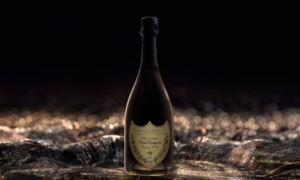 https://champagner.com/wp-content/uploads/2021/01/Jahrgangschampagner.jpeg
600
1000
admin
https://champagner.com/wp-content/uploads/2024/07/Champagner.com-Logo-300x300.png
admin2021-01-08 21:54:182024-08-03 06:07:45Dom Perignon
https://champagner.com/wp-content/uploads/2021/01/Jahrgangschampagner.jpeg
600
1000
admin
https://champagner.com/wp-content/uploads/2024/07/Champagner.com-Logo-300x300.png
admin2021-01-08 21:54:182024-08-03 06:07:45Dom Perignon https://champagner.com/wp-content/uploads/2024/07/Champagner.com-Logo-300x300.png
1
1
admin
https://champagner.com/wp-content/uploads/2024/07/Champagner.com-Logo-300x300.png
admin2021-01-08 21:53:272024-08-03 05:44:45Dépôt
https://champagner.com/wp-content/uploads/2024/07/Champagner.com-Logo-300x300.png
1
1
admin
https://champagner.com/wp-content/uploads/2024/07/Champagner.com-Logo-300x300.png
admin2021-01-08 21:53:272024-08-03 05:44:45Dépôt https://champagner.com/wp-content/uploads/2024/07/Champagner.com-Logo-300x300.png
1
1
admin
https://champagner.com/wp-content/uploads/2024/07/Champagner.com-Logo-300x300.png
admin2021-01-08 21:52:562024-08-03 05:43:37Demi-Sec
https://champagner.com/wp-content/uploads/2024/07/Champagner.com-Logo-300x300.png
1
1
admin
https://champagner.com/wp-content/uploads/2024/07/Champagner.com-Logo-300x300.png
admin2021-01-08 21:52:562024-08-03 05:43:37Demi-Sec https://champagner.com/wp-content/uploads/2024/07/Champagner.com-Logo-300x300.png
1
1
admin
https://champagner.com/wp-content/uploads/2024/07/Champagner.com-Logo-300x300.png
admin2021-01-08 21:49:232024-08-03 05:42:09Tasting
https://champagner.com/wp-content/uploads/2024/07/Champagner.com-Logo-300x300.png
1
1
admin
https://champagner.com/wp-content/uploads/2024/07/Champagner.com-Logo-300x300.png
admin2021-01-08 21:49:232024-08-03 05:42:09Tasting https://champagner.com/wp-content/uploads/2024/07/Champagner.com-Logo-300x300.png
1
1
admin
https://champagner.com/wp-content/uploads/2024/07/Champagner.com-Logo-300x300.png
admin2021-01-08 21:48:262024-08-03 05:32:40Dégorgement
https://champagner.com/wp-content/uploads/2024/07/Champagner.com-Logo-300x300.png
1
1
admin
https://champagner.com/wp-content/uploads/2024/07/Champagner.com-Logo-300x300.png
admin2021-01-08 21:48:262024-08-03 05:32:40Dégorgement https://champagner.com/wp-content/uploads/2024/07/Champagner.com-Logo-300x300.png
1
1
admin
https://champagner.com/wp-content/uploads/2024/07/Champagner.com-Logo-300x300.png
admin2021-01-08 21:47:452024-08-03 05:28:49Débourbage
https://champagner.com/wp-content/uploads/2024/07/Champagner.com-Logo-300x300.png
1
1
admin
https://champagner.com/wp-content/uploads/2024/07/Champagner.com-Logo-300x300.png
admin2021-01-08 21:47:452024-08-03 05:28:49Débourbage champagne.com
https://champagner.com/wp-content/uploads/2021/01/champagne-cuvee-st-eloi.png
700
700
admin
https://champagner.com/wp-content/uploads/2024/07/Champagner.com-Logo-300x300.png
admin2021-01-08 21:47:042024-08-03 05:27:39Cuvée
champagne.com
https://champagner.com/wp-content/uploads/2021/01/champagne-cuvee-st-eloi.png
700
700
admin
https://champagner.com/wp-content/uploads/2024/07/Champagner.com-Logo-300x300.png
admin2021-01-08 21:47:042024-08-03 05:27:39Cuvée champagne.com
https://champagner.com/wp-content/uploads/2021/01/grand-cru-ambonnay-champagne.png
700
700
admin
https://champagner.com/wp-content/uploads/2024/07/Champagner.com-Logo-300x300.png
admin2021-01-08 21:46:132024-08-03 05:26:13Cru
champagne.com
https://champagner.com/wp-content/uploads/2021/01/grand-cru-ambonnay-champagne.png
700
700
admin
https://champagner.com/wp-content/uploads/2024/07/Champagner.com-Logo-300x300.png
admin2021-01-08 21:46:132024-08-03 05:26:13Cru https://champagner.com/wp-content/uploads/2024/07/Champagner.com-Logo-300x300.png
1
1
admin
https://champagner.com/wp-content/uploads/2024/07/Champagner.com-Logo-300x300.png
admin2021-01-08 21:45:362024-08-03 05:21:50Crémant
https://champagner.com/wp-content/uploads/2024/07/Champagner.com-Logo-300x300.png
1
1
admin
https://champagner.com/wp-content/uploads/2024/07/Champagner.com-Logo-300x300.png
admin2021-01-08 21:45:362024-08-03 05:21:50Crémant https://champagner.com/wp-content/uploads/2021/01/Cramant-PLZ-51530.jpg
750
1050
admin
https://champagner.com/wp-content/uploads/2024/07/Champagner.com-Logo-300x300.png
admin2021-01-08 21:44:592024-08-03 05:22:35Cramant
https://champagner.com/wp-content/uploads/2021/01/Cramant-PLZ-51530.jpg
750
1050
admin
https://champagner.com/wp-content/uploads/2024/07/Champagner.com-Logo-300x300.png
admin2021-01-08 21:44:592024-08-03 05:22:35Cramant https://champagner.com/wp-content/uploads/2024/07/Champagner.com-Logo-300x300.png
1
1
admin
https://champagner.com/wp-content/uploads/2024/07/Champagner.com-Logo-300x300.png
admin2021-01-08 21:44:282024-08-03 05:20:49Couleuse
https://champagner.com/wp-content/uploads/2024/07/Champagner.com-Logo-300x300.png
1
1
admin
https://champagner.com/wp-content/uploads/2024/07/Champagner.com-Logo-300x300.png
admin2021-01-08 21:44:282024-08-03 05:20:49Couleuse https://champagner.com/wp-content/uploads/2024/07/Champagner.com-Logo-300x300.png
1
1
admin
https://champagner.com/wp-content/uploads/2024/07/Champagner.com-Logo-300x300.png
admin2021-01-08 21:43:532024-08-03 05:19:32Collerette
https://champagner.com/wp-content/uploads/2024/07/Champagner.com-Logo-300x300.png
1
1
admin
https://champagner.com/wp-content/uploads/2024/07/Champagner.com-Logo-300x300.png
admin2021-01-08 21:43:532024-08-03 05:19:32Collerette https://champagner.com/wp-content/uploads/2024/07/Champagner.com-Logo-300x300.png
1
1
admin
https://champagner.com/wp-content/uploads/2024/07/Champagner.com-Logo-300x300.png
admin2021-01-08 21:43:132024-08-03 05:18:16Coteaux Champenois
https://champagner.com/wp-content/uploads/2024/07/Champagner.com-Logo-300x300.png
1
1
admin
https://champagner.com/wp-content/uploads/2024/07/Champagner.com-Logo-300x300.png
admin2021-01-08 21:43:132024-08-03 05:18:16Coteaux Champenois https://champagner.com/wp-content/uploads/2024/07/Champagner.com-Logo-300x300.png
1
1
admin
https://champagner.com/wp-content/uploads/2024/07/Champagner.com-Logo-300x300.png
admin2021-01-08 21:42:232024-08-03 05:16:59Côte
https://champagner.com/wp-content/uploads/2024/07/Champagner.com-Logo-300x300.png
1
1
admin
https://champagner.com/wp-content/uploads/2024/07/Champagner.com-Logo-300x300.png
admin2021-01-08 21:42:232024-08-03 05:16:59Côte https://champagner.com/wp-content/uploads/2024/07/Champagner.com-Logo-300x300.png
1
1
admin
https://champagner.com/wp-content/uploads/2024/07/Champagner.com-Logo-300x300.png
admin2021-01-08 21:41:402024-08-03 05:16:05Cordon
https://champagner.com/wp-content/uploads/2024/07/Champagner.com-Logo-300x300.png
1
1
admin
https://champagner.com/wp-content/uploads/2024/07/Champagner.com-Logo-300x300.png
admin2021-01-08 21:41:402024-08-03 05:16:05Cordon https://champagner.com/wp-content/uploads/2024/07/Champagner.com-Logo-300x300.png
1
1
admin
https://champagner.com/wp-content/uploads/2024/07/Champagner.com-Logo-300x300.png
admin2021-01-08 21:41:092024-08-03 05:14:51Chef de Caves
https://champagner.com/wp-content/uploads/2024/07/Champagner.com-Logo-300x300.png
1
1
admin
https://champagner.com/wp-content/uploads/2024/07/Champagner.com-Logo-300x300.png
admin2021-01-08 21:41:092024-08-03 05:14:51Chef de Caves champagne.com
https://champagner.com/wp-content/uploads/2018/04/Chateau-de-Bligny-min.jpg
1001
1500
admin
https://champagner.com/wp-content/uploads/2024/07/Champagner.com-Logo-300x300.png
admin2021-01-08 21:40:322024-08-03 05:10:08Château
champagne.com
https://champagner.com/wp-content/uploads/2018/04/Chateau-de-Bligny-min.jpg
1001
1500
admin
https://champagner.com/wp-content/uploads/2024/07/Champagner.com-Logo-300x300.png
admin2021-01-08 21:40:322024-08-03 05:10:08Château https://champagner.com/wp-content/uploads/2021/01/Chardonnay.webp
376
602
admin
https://champagner.com/wp-content/uploads/2024/07/Champagner.com-Logo-300x300.png
admin2021-01-08 21:39:552024-08-03 05:07:49Chardonnay
https://champagner.com/wp-content/uploads/2021/01/Chardonnay.webp
376
602
admin
https://champagner.com/wp-content/uploads/2024/07/Champagner.com-Logo-300x300.png
admin2021-01-08 21:39:552024-08-03 05:07:49Chardonnay https://champagner.com/wp-content/uploads/2024/07/Champagner.com-Logo-300x300.png
1
1
admin
https://champagner.com/wp-content/uploads/2024/07/Champagner.com-Logo-300x300.png
admin2021-01-08 21:39:152024-08-03 04:59:31Chaptalisation
https://champagner.com/wp-content/uploads/2024/07/Champagner.com-Logo-300x300.png
1
1
admin
https://champagner.com/wp-content/uploads/2024/07/Champagner.com-Logo-300x300.png
admin2021-01-08 21:39:152024-08-03 04:59:31Chaptalisation https://champagner.com/wp-content/uploads/2024/07/Moet-Chandon-Champagner-Kuebel.webp
800
800
admin
https://champagner.com/wp-content/uploads/2024/07/Champagner.com-Logo-300x300.png
admin2021-01-08 21:37:522024-08-03 04:57:55Champagne bucket
https://champagner.com/wp-content/uploads/2024/07/Moet-Chandon-Champagner-Kuebel.webp
800
800
admin
https://champagner.com/wp-content/uploads/2024/07/Champagner.com-Logo-300x300.png
admin2021-01-08 21:37:522024-08-03 04:57:55Champagne bucket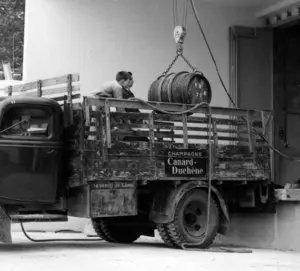 champagne.com
https://champagner.com/wp-content/uploads/2018/05/canard-duchene-champagner-transport.jpg
514
570
admin
https://champagner.com/wp-content/uploads/2024/07/Champagner.com-Logo-300x300.png
admin2021-01-08 21:34:272024-08-03 04:54:09Champagne origin
champagne.com
https://champagner.com/wp-content/uploads/2018/05/canard-duchene-champagner-transport.jpg
514
570
admin
https://champagner.com/wp-content/uploads/2024/07/Champagner.com-Logo-300x300.png
admin2021-01-08 21:34:272024-08-03 04:54:09Champagne origin https://champagner.com/wp-content/uploads/2024/07/Champagner.com-Logo-300x300.png
1
1
admin
https://champagner.com/wp-content/uploads/2024/07/Champagner.com-Logo-300x300.png
admin2021-01-08 21:25:132024-08-03 04:53:12Chai
https://champagner.com/wp-content/uploads/2024/07/Champagner.com-Logo-300x300.png
1
1
admin
https://champagner.com/wp-content/uploads/2024/07/Champagner.com-Logo-300x300.png
admin2021-01-08 21:25:132024-08-03 04:53:12Chai https://champagner.com/wp-content/uploads/2024/07/Champagner.com-Logo-300x300.png
1
1
admin
https://champagner.com/wp-content/uploads/2024/07/Champagner.com-Logo-300x300.png
admin2021-01-08 21:24:322024-08-03 04:51:57Cellier
https://champagner.com/wp-content/uploads/2024/07/Champagner.com-Logo-300x300.png
1
1
admin
https://champagner.com/wp-content/uploads/2024/07/Champagner.com-Logo-300x300.png
admin2021-01-08 21:24:322024-08-03 04:51:57Cellier https://champagner.com/wp-content/uploads/2024/07/Champagner.com-Logo-300x300.png
1
1
admin
https://champagner.com/wp-content/uploads/2024/07/Champagner.com-Logo-300x300.png
admin2021-01-08 21:24:052024-08-03 04:50:53Caques
https://champagner.com/wp-content/uploads/2024/07/Champagner.com-Logo-300x300.png
1
1
admin
https://champagner.com/wp-content/uploads/2024/07/Champagner.com-Logo-300x300.png
admin2021-01-08 21:24:052024-08-03 04:50:53Caques https://champagner.com/wp-content/uploads/2024/07/Champagner.com-Logo-300x300.png
1
1
admin
https://champagner.com/wp-content/uploads/2024/07/Champagner.com-Logo-300x300.png
admin2021-01-08 21:23:342024-08-03 04:49:43Cave
https://champagner.com/wp-content/uploads/2024/07/Champagner.com-Logo-300x300.png
1
1
admin
https://champagner.com/wp-content/uploads/2024/07/Champagner.com-Logo-300x300.png
admin2021-01-08 21:23:342024-08-03 04:49:43Cave https://champagner.com/wp-content/uploads/2024/07/Champagner.com-Logo-300x300.png
1
1
admin
https://champagner.com/wp-content/uploads/2024/07/Champagner.com-Logo-300x300.png
admin2021-01-08 21:22:592024-08-03 04:48:53Cava
https://champagner.com/wp-content/uploads/2024/07/Champagner.com-Logo-300x300.png
1
1
admin
https://champagner.com/wp-content/uploads/2024/07/Champagner.com-Logo-300x300.png
admin2021-01-08 21:22:592024-08-03 04:48:53Cava https://champagner.com/wp-content/uploads/2024/07/Champagner.com-Logo-300x300.png
1
1
admin
https://champagner.com/wp-content/uploads/2024/07/Champagner.com-Logo-300x300.png
admin2021-01-08 21:22:212024-08-03 04:47:33Bouquet
https://champagner.com/wp-content/uploads/2024/07/Champagner.com-Logo-300x300.png
1
1
admin
https://champagner.com/wp-content/uploads/2024/07/Champagner.com-Logo-300x300.png
admin2021-01-08 21:22:212024-08-03 04:47:33Bouquet https://champagner.com/wp-content/uploads/2024/07/Champagner.com-Logo-300x300.png
1
1
admin
https://champagner.com/wp-content/uploads/2024/07/Champagner.com-Logo-300x300.png
admin2021-01-08 21:21:312024-08-03 04:46:27Brood
https://champagner.com/wp-content/uploads/2024/07/Champagner.com-Logo-300x300.png
1
1
admin
https://champagner.com/wp-content/uploads/2024/07/Champagner.com-Logo-300x300.png
admin2021-01-08 21:21:312024-08-03 04:46:27Brood https://champagner.com/wp-content/uploads/2024/07/Champagner.com-Logo-300x300.png
1
1
admin
https://champagner.com/wp-content/uploads/2024/07/Champagner.com-Logo-300x300.png
admin2021-01-08 21:20:512024-08-03 04:45:32Brix
https://champagner.com/wp-content/uploads/2024/07/Champagner.com-Logo-300x300.png
1
1
admin
https://champagner.com/wp-content/uploads/2024/07/Champagner.com-Logo-300x300.png
admin2021-01-08 21:20:512024-08-03 04:45:32Brix https://champagner.com/wp-content/uploads/2024/07/Champagner.com-Logo-300x300.png
1
1
admin
https://champagner.com/wp-content/uploads/2024/07/Champagner.com-Logo-300x300.png
admin2021-01-08 20:37:532024-08-03 04:44:29Bouchage
https://champagner.com/wp-content/uploads/2024/07/Champagner.com-Logo-300x300.png
1
1
admin
https://champagner.com/wp-content/uploads/2024/07/Champagner.com-Logo-300x300.png
admin2021-01-08 20:37:532024-08-03 04:44:29Bouchage https://champagner.com/wp-content/uploads/2024/07/Champagner.com-Logo-300x300.png
1
1
admin
https://champagner.com/wp-content/uploads/2024/07/Champagner.com-Logo-300x300.png
admin2021-01-08 20:35:202024-08-03 04:21:13Botrytis
https://champagner.com/wp-content/uploads/2024/07/Champagner.com-Logo-300x300.png
1
1
admin
https://champagner.com/wp-content/uploads/2024/07/Champagner.com-Logo-300x300.png
admin2021-01-08 20:35:202024-08-03 04:21:13Botrytis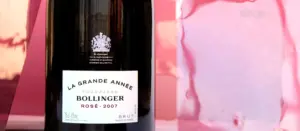 champagne.com
https://champagner.com/wp-content/uploads/2018/04/champagner_bollinger.png
370
850
admin
https://champagner.com/wp-content/uploads/2024/07/Champagner.com-Logo-300x300.png
admin2021-01-08 20:34:412024-08-03 04:20:13Bollinger
champagne.com
https://champagner.com/wp-content/uploads/2018/04/champagner_bollinger.png
370
850
admin
https://champagner.com/wp-content/uploads/2024/07/Champagner.com-Logo-300x300.png
admin2021-01-08 20:34:412024-08-03 04:20:13Bollinger https://champagner.com/wp-content/uploads/2024/07/Champagner.com-Logo-300x300.png
1
1
admin
https://champagner.com/wp-content/uploads/2024/07/Champagner.com-Logo-300x300.png
admin2021-01-08 20:32:362024-08-03 04:18:00Flower
https://champagner.com/wp-content/uploads/2024/07/Champagner.com-Logo-300x300.png
1
1
admin
https://champagner.com/wp-content/uploads/2024/07/Champagner.com-Logo-300x300.png
admin2021-01-08 20:32:362024-08-03 04:18:00Flower https://champagner.com/wp-content/uploads/2024/07/Champagner.com-Logo-300x300.png
1
1
admin
https://champagner.com/wp-content/uploads/2024/07/Champagner.com-Logo-300x300.png
admin2021-01-08 20:32:032024-08-03 04:16:42Blanc de Noirs
https://champagner.com/wp-content/uploads/2024/07/Champagner.com-Logo-300x300.png
1
1
admin
https://champagner.com/wp-content/uploads/2024/07/Champagner.com-Logo-300x300.png
admin2021-01-08 20:32:032024-08-03 04:16:42Blanc de Noirs https://champagner.com/wp-content/uploads/2024/07/Champagner.com-Logo-300x300.png
1
1
admin
https://champagner.com/wp-content/uploads/2024/07/Champagner.com-Logo-300x300.png
admin2021-01-08 20:31:172024-08-03 04:16:02Blanc de Blancs
https://champagner.com/wp-content/uploads/2024/07/Champagner.com-Logo-300x300.png
1
1
admin
https://champagner.com/wp-content/uploads/2024/07/Champagner.com-Logo-300x300.png
admin2021-01-08 20:31:172024-08-03 04:16:02Blanc de Blancs https://champagner.com/wp-content/uploads/2024/07/Champagner.com-Logo-300x300.png
1
1
admin
https://champagner.com/wp-content/uploads/2024/07/Champagner.com-Logo-300x300.png
admin2021-01-08 20:30:302024-08-03 04:15:24Bite
https://champagner.com/wp-content/uploads/2024/07/Champagner.com-Logo-300x300.png
1
1
admin
https://champagner.com/wp-content/uploads/2024/07/Champagner.com-Logo-300x300.png
admin2021-01-08 20:30:302024-08-03 04:15:24Bite https://champagner.com/wp-content/uploads/2024/07/Champagner.com-Logo-300x300.png
1
1
admin
https://champagner.com/wp-content/uploads/2024/07/Champagner.com-Logo-300x300.png
admin2021-01-08 20:29:562024-08-03 04:14:25Contemplative
https://champagner.com/wp-content/uploads/2024/07/Champagner.com-Logo-300x300.png
1
1
admin
https://champagner.com/wp-content/uploads/2024/07/Champagner.com-Logo-300x300.png
admin2021-01-08 20:29:562024-08-03 04:14:25Contemplative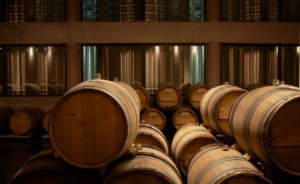 https://champagner.com/wp-content/uploads/2021/01/Barrique.jpg
430
700
admin
https://champagner.com/wp-content/uploads/2024/07/Champagner.com-Logo-300x300.png
admin2021-01-08 20:29:112024-08-03 04:13:07Barrique
https://champagner.com/wp-content/uploads/2021/01/Barrique.jpg
430
700
admin
https://champagner.com/wp-content/uploads/2024/07/Champagner.com-Logo-300x300.png
admin2021-01-08 20:29:112024-08-03 04:13:07Barrique https://champagner.com/wp-content/uploads/2024/07/Champagner.com-Logo-300x300.png
1
1
admin
https://champagner.com/wp-content/uploads/2024/07/Champagner.com-Logo-300x300.png
admin2021-01-08 20:28:202024-08-03 04:10:30Bar
https://champagner.com/wp-content/uploads/2024/07/Champagner.com-Logo-300x300.png
1
1
admin
https://champagner.com/wp-content/uploads/2024/07/Champagner.com-Logo-300x300.png
admin2021-01-08 20:28:202024-08-03 04:10:30Bar https://champagner.com/wp-content/uploads/2024/07/Champagner.com-Logo-300x300.png
1
1
admin
https://champagner.com/wp-content/uploads/2024/07/Champagner.com-Logo-300x300.png
admin2021-01-08 20:27:232024-08-03 04:09:32Balsamic
https://champagner.com/wp-content/uploads/2024/07/Champagner.com-Logo-300x300.png
1
1
admin
https://champagner.com/wp-content/uploads/2024/07/Champagner.com-Logo-300x300.png
admin2021-01-08 20:27:232024-08-03 04:09:32Balsamic https://champagner.com/wp-content/uploads/2024/07/Champagner.com-Logo-300x300.png
1
1
admin
https://champagner.com/wp-content/uploads/2024/07/Champagner.com-Logo-300x300.png
admin2021-01-08 20:26:462024-11-04 13:04:40Balance or balanced
https://champagner.com/wp-content/uploads/2024/07/Champagner.com-Logo-300x300.png
1
1
admin
https://champagner.com/wp-content/uploads/2024/07/Champagner.com-Logo-300x300.png
admin2021-01-08 20:26:462024-11-04 13:04:40Balance or balanced https://champagner.com/wp-content/uploads/2024/07/Champagner.com-Logo-300x300.png
1
1
admin
https://champagner.com/wp-content/uploads/2024/07/Champagner.com-Logo-300x300.png
admin2021-01-08 20:25:272024-11-04 13:03:36Balanced
https://champagner.com/wp-content/uploads/2024/07/Champagner.com-Logo-300x300.png
1
1
admin
https://champagner.com/wp-content/uploads/2024/07/Champagner.com-Logo-300x300.png
admin2021-01-08 20:25:272024-11-04 13:03:36Balanced https://champagner.com/wp-content/uploads/2024/07/Champagner.com-Logo-300x300.png
1
1
admin
https://champagner.com/wp-content/uploads/2024/07/Champagner.com-Logo-300x300.png
admin2021-01-08 20:24:542024-11-04 13:03:08Attack
https://champagner.com/wp-content/uploads/2024/07/Champagner.com-Logo-300x300.png
1
1
admin
https://champagner.com/wp-content/uploads/2024/07/Champagner.com-Logo-300x300.png
admin2021-01-08 20:24:542024-11-04 13:03:08Attack https://champagner.com/wp-content/uploads/2024/07/Champagner.com-Logo-300x300.png
1
1
admin
https://champagner.com/wp-content/uploads/2024/07/Champagner.com-Logo-300x300.png
admin2021-01-08 20:24:142024-11-04 13:01:59Breathe
https://champagner.com/wp-content/uploads/2024/07/Champagner.com-Logo-300x300.png
1
1
admin
https://champagner.com/wp-content/uploads/2024/07/Champagner.com-Logo-300x300.png
admin2021-01-08 20:24:142024-11-04 13:01:59Breathe https://champagner.com/wp-content/uploads/2024/07/Champagner.com-Logo-300x300.png
1
1
admin
https://champagner.com/wp-content/uploads/2024/07/Champagner.com-Logo-300x300.png
admin2021-01-08 20:23:372024-11-04 13:00:53Assemblage
https://champagner.com/wp-content/uploads/2024/07/Champagner.com-Logo-300x300.png
1
1
admin
https://champagner.com/wp-content/uploads/2024/07/Champagner.com-Logo-300x300.png
admin2021-01-08 20:23:372024-11-04 13:00:53Assemblage https://champagner.com/wp-content/uploads/2024/07/Champagner.com-Logo-300x300.png
1
1
admin
https://champagner.com/wp-content/uploads/2024/07/Champagner.com-Logo-300x300.png
admin2021-01-08 20:22:582024-11-04 13:00:19Flavour
https://champagner.com/wp-content/uploads/2024/07/Champagner.com-Logo-300x300.png
1
1
admin
https://champagner.com/wp-content/uploads/2024/07/Champagner.com-Logo-300x300.png
admin2021-01-08 20:22:582024-11-04 13:00:19Flavour https://champagner.com/wp-content/uploads/2021/01/Appellation-dOrigine-Controlee.jpg
1302
1158
admin
https://champagner.com/wp-content/uploads/2024/07/Champagner.com-Logo-300x300.png
admin2021-01-08 20:22:022024-11-04 12:58:14Appellation d'Origine Contrôlée (AC, AOC)
https://champagner.com/wp-content/uploads/2021/01/Appellation-dOrigine-Controlee.jpg
1302
1158
admin
https://champagner.com/wp-content/uploads/2024/07/Champagner.com-Logo-300x300.png
admin2021-01-08 20:22:022024-11-04 12:58:14Appellation d'Origine Contrôlée (AC, AOC) https://champagner.com/wp-content/uploads/2021/01/Aperitif-Champagner.webp
707
1354
admin
https://champagner.com/wp-content/uploads/2024/07/Champagner.com-Logo-300x300.png
admin2021-01-08 20:20:202024-11-04 12:57:29Aperitif
https://champagner.com/wp-content/uploads/2021/01/Aperitif-Champagner.webp
707
1354
admin
https://champagner.com/wp-content/uploads/2024/07/Champagner.com-Logo-300x300.png
admin2021-01-08 20:20:202024-11-04 12:57:29Aperitif https://champagner.com/wp-content/uploads/2021/01/Alterston.jpg
544
822
admin
https://champagner.com/wp-content/uploads/2024/07/Champagner.com-Logo-300x300.png
admin2021-01-08 20:19:202024-11-04 12:56:23Age tone
https://champagner.com/wp-content/uploads/2021/01/Alterston.jpg
544
822
admin
https://champagner.com/wp-content/uploads/2024/07/Champagner.com-Logo-300x300.png
admin2021-01-08 20:19:202024-11-04 12:56:23Age tone https://champagner.com/wp-content/uploads/2021/01/Agraffe.jpg
600
900
admin
https://champagner.com/wp-content/uploads/2024/07/Champagner.com-Logo-300x300.png
admin2021-01-08 19:44:442024-11-04 12:54:39Agraffe
https://champagner.com/wp-content/uploads/2021/01/Agraffe.jpg
600
900
admin
https://champagner.com/wp-content/uploads/2024/07/Champagner.com-Logo-300x300.png
admin2021-01-08 19:44:442024-11-04 12:54:39Agraffe https://champagner.com/wp-content/uploads/2021/01/Alkohol-Champagner.jpg
1238
2200
admin
https://champagner.com/wp-content/uploads/2024/07/Champagner.com-Logo-300x300.png
admin2021-01-08 19:42:292024-11-04 12:55:46Alcohol
https://champagner.com/wp-content/uploads/2021/01/Alkohol-Champagner.jpg
1238
2200
admin
https://champagner.com/wp-content/uploads/2024/07/Champagner.com-Logo-300x300.png
admin2021-01-08 19:42:292024-11-04 12:55:46Alcohol https://champagner.com/wp-content/uploads/2021/01/Dégorgement-à-la-volée.jpg
1024
768
admin
https://champagner.com/wp-content/uploads/2024/07/Champagner.com-Logo-300x300.png
admin2021-01-08 19:32:172024-11-04 12:53:10Desludging
https://champagner.com/wp-content/uploads/2021/01/Dégorgement-à-la-volée.jpg
1024
768
admin
https://champagner.com/wp-content/uploads/2024/07/Champagner.com-Logo-300x300.png
admin2021-01-08 19:32:172024-11-04 12:53:10Desludging https://champagner.com/wp-content/uploads/2021/01/abgang.jpeg
600
1200
admin
https://champagner.com/wp-content/uploads/2024/07/Champagner.com-Logo-300x300.png
admin2021-01-08 18:54:292024-07-31 23:38:17Departure
https://champagner.com/wp-content/uploads/2021/01/abgang.jpeg
600
1200
admin
https://champagner.com/wp-content/uploads/2024/07/Champagner.com-Logo-300x300.png
admin2021-01-08 18:54:292024-07-31 23:38:17Departure

